
1000-Word Philosophy: An Introductory Anthology
Philosophy, One Thousand Words at a Time

Meaning in Life: What Makes Our Lives Meaningful?
Author: Matthew Pianalto Category: Ethics , Phenomenology and Existentialism , Philosophy of Religion Word Count: 997
Editors’ note: this essay and its companion essay, The Meaning of Life: What’s the Point? both explore the concept of meaning in relation to human life. This essay focuses on meaning in individual human lives, whereas the other addresses the meaning of life as a whole.
Imagine becoming so fed up with your job and home life that you decide to give it all up. Now you spend your days lounging on a beach.
One day, your friend Alex finds you on the beach and questions your new lifestyle: “You’re wasting your life!” says Alex. You tell Alex that you were unhappy and explain that you are much happier now.
However, Alex responds: “There’s more to life than happiness. You aren’t doing anything meaningful with your life!” [1]
But what is a meaningful life?
Here we will review some influential answers to this question.

1. Cosmic Pessimism vs. Everyday Meaning
Pessimists might say that life has no ultimate or cosmic meaning and thus that a beach bum’s life is no more or less meaningful—in the grand scheme of things—than the lives of Beethoven, Martin Luther King, Jr., or Marie Curie. [2]
However, many philosophers argue that even if there is no ultimate meaning of life, there can be meaning in life. Our lives can be meaningful in ordinary ways, ways that don’t require that we play a special role in some kind of grand cosmic narrative. Call this everyday meaning . [3] What might give our lives this kind of meaning?
2. Subjectivism
Subjectivists say that someone’s life is meaningful if it is deeply fulfilling, engaging, or satisfying. [4] And different people find different things meaningful; a challenging career might be engaging and fulfilling for others, but boring and unsatisfying to you: you may find life on a beach much more fulfilling.
Some subjectivists distinguish between the judgment that one is fulfilled and actually being fulfilled. Fulfillment feels good, but it seems possible to be mistaken about whether we are fulfilled. Perhaps, as you lounge on the beach, you confuse being merely content with fulfillment. [5] If you tried other things like writing poetry, volunteering, or starting a business, they might end up being more fulfilling, and hence more meaningful for you. [6]
Subjectivism, however, has counterintuitive implications. Suppose someone found it fulfilling to spend all their time gazing at the sand. This may seem too bizarre, aimless, or trivial to credit as meaningful. And what if someone found meaning in ethically monstrous activities, like torturing babies or puppies? Vicious projects like these don’t seem to add positive meaning to someone’s life. [7]
Someone would have to be a rather atypical sort of human being to be truly fulfilled by sand-gazing or puppy-torturing. Could such strange lives count as meaningful? Subjectivists may say yes, but many would reject that answer and conclude that subjectivism is false.
3. Objective Meaning
Objective accounts hold that meaningful lives involve projects of positive value, such as improving our character, exercising our creativity, and making the world a better place by pursuing and promoting truth, justice, and beauty. [8]
Being a beach bum doesn’t really make the world worse , but it doesn’t make much of a positive contribution either. Your friend Alex is concerned that you are squandering your potential and thereby failing to make something meaningful of your life.
However, your decision to become a beach bum could be a way of rebelling against the “rat race” of a workaholic and overly competitive society. Perhaps you are choosing to cultivate a life of mindfulness and aesthetic contemplation of natural beauty, in protest against superficial or soul-crushing social norms. Framed that way, your life seems to align with important, enduring, objective values.
Objective accounts of meaning, however, must explain why some activities are objectively more meaningful than others.
The difficulty is that what seems frivolous or pointless from one point of view may seem valuable and worthwhile from another. For some, climbing Mount Everest might count as an admirable exercise of physical and mental endurance, an inspiring achievement. Others may think it is stupid to climb big rocks, risking death and wasting resources that could be directed toward other more valuable causes.
But perhaps such people are just being narrow-minded. The meaningfulness of being a beach bum, a mountain-climber, or anything else might depend on our motives or options and not just on what the activity involves. [9]
4. Hybrid Theory
The hybrid theory of meaning in life combines insights from subjectivism and objective accounts: a meaningful life provides fulfillment and does so through devotion to objectively valuable projects. [10]
Hybrid theory differs from objective accounts because it insists that a meaningful life must also be fulfilling for the person living it. There are many such projects available to us, since there are many fulfilling ways, given our distinctive personalities and abilities, that we can engage with values like truth, justice, and beauty.
However, just as a subjectively fulfilling life might seem trivial or despicable, perhaps a meaningful life doesn’t always feel fulfilling. [11]
Consider George Bailey in the classic film It’s a Wonderful Life . [12] George thinks his life has been wasted and wishes that he’d never been born. Luckily, his guardian angel Clarence rescues George from a suicide attempt and helps George understand how meaningful his life choices have been. Hybrid theory implies that George’s life now becomes meaningful because he is finally fulfilled by all his good works, but objective accounts suggest that George’s life was meaningful all along even though he didn’t realize it! [13]
Recall the opening scenario: did you ditch a meaningful (but sometimes frustrating) life for the beach?
5. Conclusion
The psychiatrist and Holocaust survivor Viktor Frankl held that the search for meaning is the fundamental human drive. [14] He claimed that a sense of meaning in life gives people the strength to persevere and even thrive despite the adversity and injustice we must sometimes confront. [15]
Questions about meaning in life often arise when we suspect that something is missing from our lives. Despite their differences, the theories surveyed above seem to agree that there are many things we might do—or try—that would be meaningful. Talking about it with your friend Alex may be a good place to start. [16] Why? Because good relationships frequently rank as important sources of meaning: perhaps meaning is often made—or discovered—together.
[1] Emily Esfahani Smith (2017) uses this distinction between happiness and meaning in life in her survey of psychological research on meaning in life. See also her TED Talk, “There’s More to Life Than Being Happy.”
[2] See, e.g., Benatar (2017) and Weinberg (2021) for defenses of the pessimistic outlook. At least one theist agrees with the pessimists that if life has no divine meaning or purpose, then nothing we do or become has any lasting significance and that our lives are all equally absurd: see Craig (2013).
[3] Many philosophers who propose theories of meaning in life are either agnostic or skeptical of the idea that life as a whole has any divine meaning or purpose. See, e.g., Wolf (2010). Of course, if one does think life as a whole has divine meaning or purpose, then having meaning in one’s life might well involve living in accord with the supernatural point of existence. Some of the accounts of meaning in life are consistent with religious ideas about the meaning of life; I leave it as an exercise to the reader to work out which views will or will not cohere with their own religious convictions.
[4] This idea is developed in the final chapter of Taylor (2000).
[5] John Stuart Mill issues a similar warning against conflating happiness and contentment in Utilitarianism , Chapter 2.
[6] This point is developed in more sophisticated subjectivist accounts of meaning in life. See, e.g. Calhoun (2015) and Parmer (2021).
[7] See Campbell and Nyholm (2015) or their contribution in Landau (2022) for discussion of “anti-meaning”: activities, projects, and lives that have negative and destructive significance.
[8] See Metz (2013) for discussion of several different accounts of this sort; Metz defends his own version in the final chapter. On creativity, see Taylor (1987) and Matheson (2018).
[9] Examples like the beach bum are often under-described–including in this essay! It is worth taking such examples and considering variations of intentions, motives, circumstances, and so forth in order to consider how changes in these various elements may alter our assessment of the meaningfulness of the life or activity. Whole lives are usually, if not always, more complex than these brief examples. Philosophers who endorse narrative theories of meaning in life would suggest that the focus on particular activities and roles fails to consider that a meaningful life might also need to make holistic sense as a meaningful story. See Kauppinen (2012).
[10] The term “project” here includes not just completable activities like painting a picture but also open-ended activities such as maintaining strong relationships with friends and family. This approach is developed by Susan Wolf in Meaning in Life and Why It Matters , and in three essays collected in Wolf (2014): see the essays in Part II: “The Meanings of Lives,” “Happiness and Meaning: Two Aspects of the Good Life,” and “Happiness and Morality.” The text of Meaning in Life and Why It Matters is available at the Tanner Lectures website. See the print edition for excellent commentaries on Wolf’s position and a response by Wolf. A similar view is developed by Peter Singer in How Are We to Live? (1993), Chapter 10.
[11] Another potential problem is that while hybrid theory aims to take the attractive features of subjective fulfillment and objective accounts of meaning in life, it inherits the possible problems with both views, too. Furthermore, if subjective and objective accounts contradict each other, hybrid theory might be inconsistent.
[12] This point is developed, using the example of George Bailey, in Smuts (2013).
[13] For a similar study in a life that seems very meaningful from the outside (a successful career, prosperity, and a happy family), but is wracked by unhappiness, existential dread, and moral guilt within, see Leo Tolstoy’s My Confession (2005). Tolstoy’s crisis of meaning is often discussed in the literature on meaning in life, both for the gripping way in which he describes his fear of death and his feeling that life is meaningless, and for his discussion of the solution to the problem to be found in religious faith.
[14] Frankl (2006).
[15] Of course, this does not justify the actions of those who have put others in despicable situations. For Frankl, the point is about motivation rather than justification. Revolting against oppressors, for example, may be a highly meaningful project for those who are oppressed. See also Camus (2018).
[16] On relationships and other sources of meaning in life, see Smith (2017). Further recommended reading: Landau (2017), Landau (2022), and Singer (2009). For discussion of how ordinary “folk” intuitions about meaning relate to various philosophical theories of meaning in life, see Fuhrer and Cova (2022).
Benatar, David (2017). The Human Predicament . Oxford University Press.
Calhoun, Cheshire (2015). “Geographies of Meaningful Living,” Journal of Applied Philosophy 32(1): 15-34.
Campbell, Stephen M. and Sven Nyholm (2015). “Anti-Meaning and Why It Matters,” Journal of the American Philosophical Association 1(4): 694-711.
Camus, Albert (2018). The Myth of Sisyphus and Other Essays . Trans. Justin O’Brien. Vintage.
Craig, William Lane (2013). “The Absurdity of Life Without God.” In: Jason Seachris, ed. Exploring the Meaning of Life . Wiley-Blackwell: 153-172.
Frankl, Viktor E. (2006). Man’s Search for Meaning . Beacon Press. Originally published in 1946.
Fuhrer, Joffrey and Florian Cova (2022). “What makes a life meaningful? Folk intuitions about the content and shape of meaningful lives,” Philosophical Psychology.
Kauppinen, Antti (2012). “Meaningfulness and Time,” Philosophy and Phenomenological Research 84(2): 345-377.
Landau, Iddo (2017). Finding Meaning in an Imperfect World . Oxford University Press.
Landau, Iddo (2022). The Oxford Handbook of Meaning in Life . Oxford University Press.
Metz, Thaddeus (2013). Meaning in Life . Oxford University Press
Mill, John Stuart (1863). Utilitarianism .
Parmer, W. Jared (2021). “Meaning in Life and Becoming More Fulfilled,” Journal of Ethics and Social Philosophy 20(1): 1-29.
Singer, Irving (2009). Meaning in Life, Vol. 1: The Creation of Value . MIT Press.
Singer, Peter (1993). How Are We to Live? Ethics in an Age of Self-Interest . Prometheus.
Smith, Emily E. (2017). The Power of Meaning . Crown.
Smith, Emily E. (2017). “There’s More to Life Than Being Happy.” TED.com.
Smuts, Aaron (2013). “The Good Cause Account of the Meaning of Life,” The Southern Journal of Philosophy 41(4): 536-562.
Taylor, Richard (2000). Good and Evil . Prometheus. Originally published in 1970.
Taylor, Richard (1987). “Time and Life’s Meaning,” The Review of Metaphysics 40(4): 675-686.
Tolstoy, Leo (2005). My Confession . Translated by Aylmer Maude. Originally published in Russian in 1882.
Weinberg, Rivka (2021). “Ultimate Meaning: We Don’t Have It, We Can’t Get It, and We Should Be Very, Very Sad,” Journal of Controversial Ideas 1(1), 4.
Wolf, Susan (2010). Meaning in Life and Why It Matters . Princeton University Press. ( Wolf’s lecture is also available at the Tanner Lecture Series website ).
— (2014). The Variety of Values . Oxford University Press.
Related Essays
Happiness: What is it to be Happy? by Kiki Berk
The Philosophy of Humor: What Makes Something Funny? by Chris A. Kramer
Existentialism by Addison Ellis
Camus on the Absurd: The Myth of Sisyphus by Erik Van Aken
Moral Education: Teaching Students to Become Better People by Dominik Balg
John Stuart Mill on the Good Life: Higher-Quality Pleasures by Dale E. Miller
Ancient Cynicism: Rejecting Civilization and Returning to Nature by G. M. Trujillo, Jr.
What Is It to Love Someone? by Felipe Pereira
Ethical Egoism: The Morality of Selfishness : by Nathan Nobis
Ethics and Absolute Poverty: Peter Singer and Effective Altruism by Brandon Boesch
Is Immortality Desirable? by Felipe Pereira
Hope by Michael Milona & Katie Stockdale
Nietzsche and the Death of God by Justin Remhof
Translations
Turkish , Turkish , Thai
PDF Download
Download this essay in PDF .
About the Author
Matthew Pianalto is a Professor of Philosophy at Eastern Kentucky University. He is the author of On Patience (2016) and numerous articles and book chapters on ethics. philosophy.eku.edu/pianalto
Follow 1000-Word Philosophy on Facebook and Twitter and subscribe to receive email notifications of new essays at 1000WordPhilosophy.com .
Share this:, 32 thoughts on “ meaning in life: what makes our lives meaningful ”.
- Pingback: ความหมายชีวิต: ประเด็นคืออะไร? – ผมเป็นคนจริงจังเกินไปสินะครับ
- Pingback: ความหมายในชีวิต: อะไรทำให้ชีวิตเรามีความหมาย – ผมเป็นคนจริงจังเกินไปสินะครับ
- Pingback: Philosophy as a Way of Life – 1000-Word Philosophy: An Introductory Anthology
- Pingback: Qual o sentido da vida? (S03E06) – Esclarecimento
- Pingback: Ancient Cynicism: Rejecting Civilization and Returning to Nature – 1000-Word Philosophy: An Introductory Anthology
- Pingback: Aristotle on Friendship: What Does It Take to Be a Good Friend? – 1000-Word Philosophy: An Introductory Anthology
- Pingback: The Meaning of Life: What’s the Point? – 1000-Word Philosophy: An Introductory Anthology
- Pingback: The Philosophy of Humor: What Makes Something Funny? – 1000-Word Philosophy: An Introductory Anthology
- Pingback: Online Philosophy Resources Weekly Update - Philosophy News
- Pingback: Online Philosophy Resources Weekly Update | Daily Nous
- Pingback: Ethical Egoism: The Morality of Selfishness – 1000-Word Philosophy: An Introductory Anthology
- Pingback: Ethics and Absolute Poverty: Peter Singer and Effective Altruism – 1000-Word Philosophy: An Introductory Anthology
- Pingback: “God is dead”: Nietzsche and the Death of God – 1000-Word Philosophy: An Introductory Anthology
- Pingback: Hope – 1000-Word Philosophy: An Introductory Anthology
- Pingback: Is Immortality Desirable? – 1000-Word Philosophy: An Introductory Anthology
- Pingback: Existentialism – 1000-Word Philosophy: An Introductory Anthology
- Pingback: Camus on the Absurd: The Myth of Sisyphus – 1000-Word Philosophy: An Introductory Anthology
- Pingback: Happiness: What is it to be Happy? – 1000-Word Philosophy: An Introductory Anthology
Comments are closed.

Your complimentary articles
You’ve read one of your four complimentary articles for this month.
You can read four articles free per month. To have complete access to the thousands of philosophy articles on this site, please
Question of the Month
What is life, the following answers to this fundamental question each win a random book..
Life is the aspect of existence that processes, acts, reacts, evaluates, and evolves through growth (reproduction and metabolism). The crucial difference between life and non-life (or non-living things) is that life uses energy for physical and conscious development. Life is anything that grows and eventually dies, i.e., ceases to proliferate and be cognizant. Can we say that viruses, for example, are cognizant? Yes, insofar as they react to stimuli; but they are alive essentially because they reproduce and grow. Computers are non-living because even though they can cognize, they do not develop biologically (grow), and cannot produce offspring. It is not cognition that determines life, then: it is rather proliferation and maturation towards a state of death; and death occurs only to living substances.
Or is the question, ‘What is the meaning (purpose) of life?’ That’s a real tough one. But I think that the meaning of life is the ideals we impose upon it, what we demand of it. I’ve come to reaffirm my Boy Scout motto, give or take a few words, that the meaning of life is to: Do good, Be Good, but also to Receive Good. The foggy term in this advice, of course, is ‘good’; but I leave that to the intuitive powers that we all share.
There are, of course, many intuitively clear examples of Doing Good: by retrieving a crying baby from a dumpster; by trying to rescue someone who’s drowning. Most of us would avoid murdering; and most of us would refrain from other acts we find intuitively wrong. So our natural intuitions determine the meaning of life for us; and it seems for other species as well, for those intuitions resonate through much of life and give it its purpose.
Tom Baranski, Somerset, New Jersey
The ceramic artist Edmund de Waal places an object in front of him and begins to tell a story. Even if the patina, chips and signs of repair of the inanimate object hint at its history, the story is told by a living observer. A living thing is an object that contains its story within itself. Life’s story is held in the genome, based in DNA. Maybe other ways for memorising the story may be discovered, but in environments subject to common chemical processes, common methods are likely to emerge.
Although we have only the example of the Earth, it shows that life will evolve to fill every usable niche, and to secure and further diversify those niches. This should not be thought of as purposeful. Life embodies a ‘plan’, but one that does not specify ends, only methods acquired iteratively. Inanimate processes can be cyclic but not iterative: they do not learn from past mistakes.
Life exists at many levels. Life is also a process through which energy and materials are transformed; but so is non-life. The difference is that the process of life is intimately linked to story it contains, whereas non-life is indifferent to the story we impose upon it. Yet life is only a story, so it can act only through matter. Therefore life is by nature a toolmaker. Its tools are potentially everything that exists, and its workshop is potentially the whole universe. So why do humans risk undermining the life of which they are part? Because they try to impose upon it a story of their own making. Yet humans, the ‘tool-making animals’, are themselves tools of life, in an unplanned experiment.
Nicholas Taylor, Little Sandhurst, Berkshire
First the technical definition. Life is self-organising chemistry which reproduces itself and passes on its evolved characteristics, encoded in DNA. In thermodynamics terms, it has the ability to reduce local entropy or disorganisation, thus locally contravening the third law of thermodynamics.
But what is life really about , if anything? The two possibilities are, life is either a meaningless accident arising from the laws of physics operating in a meaningless universe, or it is a step in a planned ‘experiment’. I say ‘step’, because this cannot be the end. The current state of life is as yet too unstable and undeveloped for it to be the end. And I say ‘experiment’ because the evolutionary nature of life suggests that its future is not known. If therefore the universe itself has a purpose, it seems most likely to be to explore what the outcome of the evolutionary experiment would be.
But what will be the outcome? If, as many physicists now believe, the universe is only information, then harnessing all the resources of the universe in one giant evolutionary process could plausibly provide a useful outcome for a species clever enough to create the universe in the first place. On this interpretation, life will ultimately organise all the physical resources of the universe into a single self-conscious intelligence, which in turn will then be able to interact with its creator(s).
Dr Harry Fuchs, Flecknoe, Warwickshire
Life is the embodiment of selfishness! Life is selfish because it is for itself in two ways: it is for its own survival, and it is for its own reproduction. This desire is embodied in an adaptive autocatalytic chemical system, forming life’s embodied mind.
Anything that is not itself is the other; and the collection of others constitute its environment. The organism must destructively use the other to satisfy its reproductive desire, but on achieving this, it produces an additional other – but now one that also embodies its own selfish aim and the means to satisfy this aim. Therefore, even by an organism satisfying its desire, it makes the continuing satisfaction of its desires ever more difficult to achieve. A partial solution to this dilemma is for genetically-related entities to form a cooperating society.
The underlying mechanism of evolution is therefore the iteration of the embodied desire within an ever more complex competitive and social environment. Over vast numbers of iterations, this process forces some life-forms along a pathway that solves the desire for survival and reproduction by developing ever more complex and adaptable minds. This is achieved by supplementing their underlying cellular embodied chemistry with a specialist organ (although still based on chemistry) that we call its brain, able to rapidly process electrical signals. Advanced minds can collect and process vast inputs of data by ‘projecting’ the derived output back onto its environmental source, that is by acting. However advanced it might be, an organism is still driven by the same basic needs for survival and reproduction. The creative process, however, leads the organism towards an increasingly aesthetic experience of the world. This is why for us the world we experience is both rich and beautiful.
Dr Steve Brewer, St Ives, Cornwall
In our scientific age, we look to the biologists to define ‘life’ for us. After all, it is their subject matter. I believe they have yet to reach consensus, but a biological definition would be something like, ‘Life is an arrangement of molecules with qualities of self-sustenance and self-replication’. This kind of definition might serve the purposes of biologists, but for me, it has five deficiencies. First, any definition of life by biologists would have little utility outside biology because of its necessary inclusiveness. We humans would find ourselves in a class of beings that included the amoeba. ‘Life’ would be the limited common properties of all organisms, including the lowest. Second, the scientific definition of life is necessarily an external one. I think that knowing what life is, as opposed to defining it, requires knowing it from within. Non-sentient organisms live, but they do not know life. Third, in the scientific definition, there is no place for life having value. However, many would say that life has value in its own right – that it is not simply that we humans value life and so give it value, but that it has value intrinsically. Fourth, there is the question of life as a whole having a purpose or goal. This notion is not scientific, but one wonders if the tools of science are fit to detect any evolutionary purpose, if there is one. Fifth, for the scientists, life is a set of biological conditions and processes. However, everywhere and always, people have conceived of a life after biological death, a life of spirit not necessarily dependent on the physical for existence.
The scientific definition of life is valid in its context, but otherwise I find it impoverished. I believe there is a hierarchy of living beings from the non-sentient, to the sentient, to humans, and perhaps up to God. When I ask, ‘What is life? I want to know what life is at its highest form. I believe life at its best is spirit: it is active, sentient, feeling, thinking, purposive, valuing, social, other-respecting, relating, and caring.
John Talley, Rutherfordton, NC
I listen enthralled to scientific debate on what, how, when and where life was created. However, questions remain which may never be resolved. In this vacuum, philosophers and religious thinkers have attempted to give meaning to life by suggesting goals: Plato suggested the acquisition of knowledge, Aristotle to practice virtue, and the Stoics, mental fortitude and self-control. Today’s philosophers echo the existentialist view that life is full of absurdity, although they also tell us that we must put meaning into life by making our own values in an indifferent world. But if life is just a journey from womb to tomb, will such ‘meaning’ be sufficient to allow the traveller at journey’s end to feel that it was worthwhile?
Perhaps the hypothesis upon which Ivan Tyrrell and Joe Griffin have based their therapy could help (see Human Givens , 2003). They describe that we are born with evolved needs that seek satisfaction from our environment. These are physical and emotional needs, which, when enough of them are met, ensure the health of the individual, maximising his or her ability to achieve meaning in life. Griffin and Tyrrell have proven empirically that when sufficient needs are met an individual will enjoy mental and physical health, unless there is damage or toxicity in the environment. Some of these needs were identified by Maslow in his ‘Hierarchy of Needs’ in his 1943 paper ‘A Theory of Human Motivation’, Psychological Review , 50 (4), but Griffin and Tyrrell focus more clearly on emotional needs such as:
• To achieve, and to feel competent
• To fulfil our sense of autonomy and control
• To be emotionally connected to other people and part of a larger community
• To have a sense of status within social groupings
• For privacy and rest, to reflect and consolidate learning
• And yes – to have meaning in one’s life
Meaning becomes difficult, if not impossible, to achieve if these needs are insufficiently satisfied. Unfortunately, modern society seeks meaning to life through materialism, to the detriment of our biological needs, leading to dissatisfaction and a consequent inability to find meaning. The result is an exponential increase in mental ill-health. Sadly, then, many of us will not experience the satisfaction of a meaningful life journey.
Caryl A. Fuchs, Flecknoe, Warwickshire
Life is the eternal and unbroken flow of infinite rippling simultaneous events that by a fortuitous chain has led to this universe of elements we are all suspended in, that has somehow led to this present experience of sentient existence. Animal life (excluding that of humans) shows that life is a simple matter of being, by means of a modest routine of eating, sleeping and reproducing. Animals balance their days between these necessities, doing only what their bodies ask of them. The life of vegetation is not far from that of animals. They eat and sleep and reproduce in their own way, for the same result. So life is a beautiful and naturally harmonious borrowing of energy.
Yet we have taken it for granted. We have lost the power to simply be happy eating, sleeping, reproducing, believing we need a reason to be alive, a purpose and a goal to reach, so that on our deathbeds (something we have been made to fear) we can look back and tell ourselves we have done something with our lives. Life has lost its purpose because we have tried to give it one. The truth is that we are no more significant than the sand by the sea or the clouds in the sky. No more significant. But as significant.
No matter what your race, religion or gender, when you first step outside your door in the morning and feel the fresh air in your lungs and the morning sun on your face, you close your eyes and smile. In that moment you are feeling life as it should be. No defining, no understanding, no thinking. Just that feeling of pure bliss. For that is what life is.
Courtney Walsh, Farnborough, Hampshire
Of all Webster’s definitions of ‘life’, the one for me that best covers it is, “the sequence of physical and mental experiences that make up the existence of an individual.” Indeed, life is a continuum of accomplishment, failure, discovery, dilemma, challenge, boredom, sadness, disappointment, appreciation, the giving and receipt of grace, empathy, peace, and our reactions to all sorts of stimuli – touch, love, friendship, loss… One can either merely exist or try to achieve, working through the difficult times, perhaps learning a thing or two. Everyone has a story. I’ve been surprised when learning something new about an acquaintance or friend that must have been very difficult to manage or survive; but there they are in front of me. It’s how you come out on the other side of those challenging times that is important. How you land, get on with it, and keep on truckin’.
Life cannot be planned: there’s fate, and there’s simple bad luck. Failure can bring crushing disappointment, or you can try and make a new plan. A person can waste an inordinate amount of time mourning what they don’t have, or plans that don’t work out. But who wants to waste that much time regretting?
Life has happy surprises, small moments to cherish. It’s a matter of weighing the good and bad times – the challenge is to balance both, ending up with a life looked back on that was worth the mighty effort. I’m not meaning to sound like a Pollyanna – I assure you I’m not – it’s just more pleasant to strive for a modicum of equilibrium. If I can manage that, I’m good.
Cheryl Anderson, Kenilworth, Illinois
“Life’s but a walking shadow, a poor player, That struts and frets his hour upon the stage And then is heard no more. It is a tale Told by an idiot, full of sound and fury, Signifying nothing.” ( Macbeth , Act V, Scene V)
These words of Shakespeare’s Macbeth summarize interesting ideas about the nature of life. The first line expresses two of the three marks of existence as per Buddhist thinking, Anicca , impermanence, and Anatta , non-self: a “walking shadow” is as insubstantial and impermanent as anything imaginable; a “poor player” neither creates nor directs his role, and the character being played only exists because of an author. Macbeth’s entire statement, particularly the last sentence, expresses the third Buddhist mark of existence: Dukkha , dissatisfaction.
The stage metaphor in the second line represents boundaries or limits. Scientific research into the nature of life often focuses on the material, energetic, and temporal limitations within which life can exist. The temporal limit of life is known as death. In the spirit of this interpretation, the idea of being “heard no more” could imply that life constantly evolves new forms while discarding older ones.
Macbeth hints at the wisdom of mystery traditions while anticipating the revelations of genetic science by stating that life “is a tale”. Now, this refers to the language-based, or code-based, nature of life. Readers may consider this in relation to DNA and RNA, and also in relation to John’s Gospel: “In the beginning was the Word, and the Word was with God, and the Word was God.” (The implications of the phrase “told by an idiot” exceed the scope of this inquiry.)
In five concise and poetic lines, Shakespeare defined life as an impermanent, non-self-directed, unsatisfactory, limited, ever-changing, and ultimately insignificant code.
Devon Hall, Albuquerque, New Mexico
Life is the realisation of its own contingency. But that’s not the end of it; it’s merely the means towards the creation of meaning. Life is thus a constant process of becoming, through creating values and meaning. Life is therefore perpetual transcendence, always moving into the future, creating the present. Life is also acceptance: the acceptance of finitude; acceptance of one’s responsibilities; acceptance of other human beings’ existence and choices. Life is neither fixed nor absolute, it is ambiguous; life is the possibilities entailed by existence. Life is the consciousness of humanity; it is perception of the world and the universe. So life is sadness; life is death. Life is suffering and destruction. But life is also happiness; life is living. Life is joy and creativity. Life is finding a cause to survive, a reason not to die – not yet. It is youth and old age, with everything in between. Overall, life is beautiful – ugliness is fleeting. Corpses and skeletons are lugubrious; living flesh is resplendent, all bodies are statuesque. Human life is love and hate, but it can only be life when we are with others. Life as fear and hatred is not real life at all. For some, life is God. We would all then be His children. We are nevertheless the spawn of the Earth.
Human existence is freedom – an edifice of plurality.
Greg Chatterton, Cupar, Fife
If the ancients could do philosophy in the marketplace, maybe I can too. So I employed some modern technology by texting the question ‘What is Life?’ to all my contacts. I didn’t explain the context of the question, to avoid lyrical waxing. Here are a sample of replies. Life is: being conscious of yourself and others; a being with a soul; experience; what you make it; your chance to be a success; family; living as long as you can; not being dead; greater than the sum of its parts; complex chemical organisation; different things to different people; a mystery; a journey; don’t know; a quote from a song, “baby don’t hurt me”; life begins after death. I asked a regular in my favourite café. They said, “man’s chief end is to glorify God and enjoy him forever.” A person suffering from a degenerative disease answered: “life is sh** then you die.” Another with the same illness interviewed in our local newspaper said, “My life is a mission to help other sufferers.” A colleague said “some would want to shoot themselves if they had my life, but I’m happy.” I posed the question at my art club and we did no painting that day…
I was surprised to find that I had no immediate definition of life myself (hence the idea to ask) and that there is no consensus (only one reply was repeated), but then, that also is life.
I sometimes catch myself considering life when I arrive at the turning point on my evening walk. It’s a dark spot which makes stargazing easier, and the heavens are a good place to start, since life as we know it began there (the heavier atoms like carbon which make up our bodies initially formed in dying Red Giant stars). This makes me feel two things about my life: it’s a dot because the cosmos is immense; but it’s an important dot in the cosmos because I can consider it.
Kristine Kerr, Gourock, Renfrewshire
Next Question of the Month
Now we know what life is, the next question is, How Should I Live? Please give and justify your ethical advice in less than 400 words. The prize is a semi-random book from our book mountain. Subject lines or envelopes should be marked ‘Question of the Month’, and must be received by 9th June. If you want a chance of getting a book, please include your physical address. Submission implies permission to reproduce your answer physically and electronically. Thank you.
Advertisement
This site uses cookies to recognize users and allow us to analyse site usage. By continuing to browse the site with cookies enabled in your browser, you consent to the use of cookies in accordance with our privacy policy . X
- Subject List
- Take a Tour
- For Authors
- Subscriber Services
- Publications
- African American Studies
- African Studies
- American Literature
- Anthropology
- Architecture Planning and Preservation
- Art History
- Atlantic History
- Biblical Studies
- British and Irish Literature
- Childhood Studies
- Chinese Studies
- Cinema and Media Studies
- Communication
- Criminology
- Environmental Science
- Evolutionary Biology
- International Law
- International Relations
- Islamic Studies
- Jewish Studies
- Latin American Studies
- Latino Studies
- Linguistics
- Literary and Critical Theory
- Medieval Studies
- Military History
- Political Science
- Public Health
- Renaissance and Reformation
- Social Work
- Urban Studies
- Victorian Literature
- Browse All Subjects
How to Subscribe
- Free Trials
In This Article Expand or collapse the "in this article" section The Meaning of Life
Introduction, introductory works.
- General Overviews
- Anthologies
- Precursors to the Contemporary Debate
- The Meaning of “Meaning”
- God-based Theories
- Soul-based Theories
- Subjectivism
- Intersubjectivism
- Objectivism
- Non-Naturalism
Related Articles Expand or collapse the "related articles" section about
About related articles close popup.
Lorem Ipsum Sit Dolor Amet
Vestibulum ante ipsum primis in faucibus orci luctus et ultrices posuere cubilia Curae; Aliquam ligula odio, euismod ut aliquam et, vestibulum nec risus. Nulla viverra, arcu et iaculis consequat, justo diam ornare tellus, semper ultrices tellus nunc eu tellus.
- Anti-Natalism
- God and Possible Worlds
- Philosophy of Boredom
- Philosophy of Religion
- The Problem of Evil
Other Subject Areas
Forthcoming articles expand or collapse the "forthcoming articles" section.
- Alfred North Whitehead
- Feminist Aesthetics and Feminist Philosophy of Art
- Find more forthcoming articles...
- Export Citations
- Share This Facebook LinkedIn Twitter
The Meaning of Life by Thaddeus Metz LAST REVIEWED: 10 May 2010 LAST MODIFIED: 10 May 2010 DOI: 10.1093/obo/9780195396577-0070
For millennia, thinkers have addressed the question of what, if anything, makes a life meaningful in some form or other. This article concentrates nearly exclusively on approaches to the question taken by analytic philosophers in the postwar era, by and large omitting reference to prewar Anglo-American works, texts from other traditions such as Continental or African philosophy, and writings from nonphilosophical but related fields such as religion and psychology. Much of the contemporary analytic discussion has sought to articulate and evaluate theories of meaning in life, i.e., general and fundamental principles of what all meaningful conditions have in common as distinct from meaningless ones. This entry accordingly focuses largely on these theories, which are distinguished according to the kind of property that is held to constitute meaning in life (see Supernaturalism , Naturalism , and Non-Naturalism ).
These texts are more introductory or have been written in a way that would likely be accessible to those not thoroughly trained in analytic philosophy. Baggini 2004 and Eagleton 2007 are pitched at a very wide, popular audience; Thomson 2003 and Belshaw 2005 would be best for undergraduate philosophy majors; and Belliotti 2001 , Martin 2002 , and Cottingham 2003 are probably most apt for those with some kind of university education or other intellectual development, not necessarily in Anglo-American philosophy.
Baggini, Julian. What’s It All About? Philosophy and the Meaning of Life . London: Granta, 2004.
Defends the view that meaning in life is largely a function of love; addresses approaches or maxims (e.g., Carpe diem ) more than it does principles.
Belliotti, Raymond Angelo. What Is the Meaning of Human Life? Amsterdam: Rodopi, 2001.
A thoughtful treatment of a variety of issues; defends an objective naturalist approach to meaning in the context of critical discussion of classic thinkers such as Aristotle, Nietzsche, and Schopenhauer.
Belshaw, Christopher. Ten Good Questions about Life and Death . Malden, MA: Blackwell, 2005.
Engagingly written, analytic treatments of several key “life and death” issues, many of which bear on meaningfulness, which the author cashes out objectively in terms of relationships and projects.
Cottingham, John. On the Meaning of Life . Thinking in Action. London: Routledge, 2003.
An elegantly written book that defends an Aristotelian, God-based (but not soul-based) approach to meaning in life.
Eagleton, Terry. The Meaning of Life: A Very Short Introduction . Oxford: Oxford University Press, 2007.
A light and lively essay on a variety of facets of the question of life’s meaning, often addressing linguistic and literary themes. Rejects subjective or “postmodern” approaches to meaning in favor of a need for harmonious or loving relationships.
Martin, Michael. Atheism, Morality, and Meaning . Amherst, NY: Prometheus, 2002.
A vigorous defense of a naturalist approach to morality, in the first half of the book, and to meaning, in the second. Very critical of Christian approaches to both.
Thomson, Garrett. On the Meaning of Life . London: Thompson/Wadsworth, 2003.
Argues that nine common views on meaning in life (e.g., that an infinite being is necessary for meaning or that meaning is exhausted by happiness) are flawed. Emphasizes that meaning must reside largely in activities we engage in, lest our lives be reduced to “tools” for the sake of ends beyond us.
back to top
Users without a subscription are not able to see the full content on this page. Please subscribe or login .
Oxford Bibliographies Online is available by subscription and perpetual access to institutions. For more information or to contact an Oxford Sales Representative click here .
- About Philosophy »
- Meet the Editorial Board »
- A Priori Knowledge
- Abduction and Explanatory Reasoning
- Abstract Objects
- Addams, Jane
- Adorno, Theodor
- Aesthetic Hedonism
- Aesthetics, Analytic Approaches to
- Aesthetics, Continental
- Aesthetics, Environmental
- Aesthetics, History of
- African Philosophy, Contemporary
- Alexander, Samuel
- Analytic/Synthetic Distinction
- Anarchism, Philosophical
- Animal Rights
- Anscombe, G. E. M.
- Anthropic Principle, The
- Applied Ethics
- Aquinas, Thomas
- Argument Mapping
- Art and Emotion
- Art and Knowledge
- Art and Morality
- Astell, Mary
- Aurelius, Marcus
- Austin, J. L.
- Bacon, Francis
- Bayesianism
- Bergson, Henri
- Berkeley, George
- Biology, Philosophy of
- Bolzano, Bernard
- Boredom, Philosophy of
- British Idealism
- Buber, Martin
- Buddhist Philosophy
- Burge, Tyler
- Business Ethics
- Camus, Albert
- Canterbury, Anselm of
- Carnap, Rudolf
- Cavendish, Margaret
- Chemistry, Philosophy of
- Childhood, Philosophy of
- Chinese Philosophy
- Cognitive Ability
- Cognitive Phenomenology
- Cognitive Science, Philosophy of
- Coherentism
- Communitarianism
- Computational Science
- Computer Science, Philosophy of
- Computer Simulations
- Comte, Auguste
- Conceptual Role Semantics
- Conditionals
- Confirmation
- Connectionism
- Consciousness
- Constructive Empiricism
- Contemporary Hylomorphism
- Contextualism
- Contrastivism
- Cook Wilson, John
- Cosmology, Philosophy of
- Critical Theory
- Culture and Cognition
- Daoism and Philosophy
- Davidson, Donald
- de Beauvoir, Simone
- de Montaigne, Michel
- Decision Theory
- Deleuze, Gilles
- Derrida, Jacques
- Descartes, René
- Descartes, René: Sensory Representations
- Descriptions
- Dewey, John
- Dialetheism
- Disagreement, Epistemology of
- Disjunctivism
- Dispositions
- Divine Command Theory
- Doing and Allowing
- du Châtelet, Emilie
- Dummett, Michael
- Dutch Book Arguments
- Early Modern Philosophy, 1600-1750
- Eastern Orthodox Philosophical Thought
- Education, Philosophy of
- Engineering, Philosophy and Ethics of
- Environmental Philosophy
- Epistemic Basing Relation
- Epistemic Defeat
- Epistemic Injustice
- Epistemic Justification
- Epistemic Philosophy of Logic
- Epistemology
- Epistemology and Active Externalism
- Epistemology, Bayesian
- Epistemology, Feminist
- Epistemology, Internalism and Externalism in
- Epistemology, Moral
- Epistemology of Education
- Ethical Consequentialism
- Ethical Deontology
- Ethical Intuitionism
- Eugenics and Philosophy
- Events, The Philosophy of
- Evidence-Based Medicine, Philosophy of
- Evidential Support Relation In Epistemology, The
- Evolutionary Debunking Arguments in Ethics
- Evolutionary Epistemology
- Experimental Philosophy
- Explanations of Religion
- Extended Mind Thesis, The
- Externalism and Internalism in the Philosophy of Mind
- Faith, Conceptions of
- Feminist Philosophy
- Feyerabend, Paul
- Fichte, Johann Gottlieb
- Fictionalism
- Fictionalism in the Philosophy of Mathematics
- Film, Philosophy of
- Foot, Philippa
- Foreknowledge
- Forgiveness
- Formal Epistemology
- Foucault, Michel
- Frege, Gottlob
- Gadamer, Hans-Georg
- Geometry, Epistemology of
- God, Arguments for the Existence of
- God, The Existence and Attributes of
- Grice, Paul
- Habermas, Jürgen
- Hart, H. L. A.
- Heaven and Hell
- Hegel, Georg Wilhelm Friedrich: Aesthetics
- Hegel, Georg Wilhelm Friedrich: Metaphysics
- Hegel, Georg Wilhelm Friedrich: Philosophy of History
- Hegel, Georg Wilhelm Friedrich: Philosophy of Politics
- Heidegger, Martin: Early Works
- Hermeneutics
- Higher Education, Philosophy of
- History, Philosophy of
- Hobbes, Thomas
- Horkheimer, Max
- Human Rights
- Hume, David: Aesthetics
- Hume, David: Moral and Political Philosophy
- Husserl, Edmund
- Idealizations in Science
- Identity in Physics
- Imagination
- Imagination and Belief
- Immanuel Kant: Political and Legal Philosophy
- Impossible Worlds
- Incommensurability in Science
- Indian Philosophy
- Indispensability of Mathematics
- Inductive Reasoning
- Instruments in Science
- Intellectual Humility
- Intentionality, Collective
- James, William
- Japanese Philosophy
- Kant and the Laws of Nature
- Kant, Immanuel: Aesthetics and Teleology
- Kant, Immanuel: Ethics
- Kant, Immanuel: Theoretical Philosophy
- Kierkegaard, Søren
- Knowledge-first Epistemology
- Knowledge-How
- Kristeva, Julia
- Kuhn, Thomas S.
- Lacan, Jacques
- Lakatos, Imre
- Langer, Susanne
- Language of Thought
- Language, Philosophy of
- Latin American Philosophy
- Laws of Nature
- Legal Epistemology
- Legal Philosophy
- Legal Positivism
- Leibniz, Gottfried Wilhelm
- Levinas, Emmanuel
- Lewis, C. I.
- Literature, Philosophy of
- Locke, John
- Locke, John: Identity, Persons, and Personal Identity
- Lottery and Preface Paradoxes, The
- Machiavelli, Niccolò
- Martin Heidegger: Later Works
- Martin Heidegger: Middle Works
- Material Constitution
- Mathematical Explanation
- Mathematical Pluralism
- Mathematical Structuralism
- Mathematics, Ontology of
- Mathematics, Philosophy of
- Mathematics, Visual Thinking in
- McDowell, John
- McTaggart, John
- Meaning of Life, The
- Mechanisms in Science
- Medically Assisted Dying
- Medicine, Contemporary Philosophy of
- Medieval Logic
- Medieval Philosophy
- Mental Causation
- Merleau-Ponty, Maurice
- Meta-epistemological Skepticism
- Metaepistemology
- Metametaphysics
- Metaphilosophy
- Metaphysical Grounding
- Metaphysics, Contemporary
- Metaphysics, Feminist
- Midgley, Mary
- Mill, John Stuart
- Mind, Metaphysics of
- Modal Epistemology
- Models and Theories in Science
- Montesquieu
- Moore, G. E.
- Moral Contractualism
- Moral Naturalism and Nonnaturalism
- Moral Responsibility
- Multiculturalism
- Murdoch, Iris
- Music, Analytic Philosophy of
- Nationalism
- Natural Kinds
- Naturalism in the Philosophy of Mathematics
- Naïve Realism
- Neo-Confucianism
- Neuroscience, Philosophy of
- Nietzsche, Friedrich
- Nonexistent Objects
- Normative Ethics
- Normative Foundations, Philosophy of Law:
- Normativity and Social Explanation
- Objectivity
- Occasionalism
- Ontological Dependence
- Ontology of Art
- Ordinary Objects
- Other Minds
- Panpsychism
- Particularism in Ethics
- Pascal, Blaise
- Paternalism
- Peirce, Charles Sanders
- Perception, Cognition, Action
- Perception, The Problem of
- Perfectionism
- Persistence
- Personal Identity
- Phenomenal Concepts
- Phenomenal Conservatism
- Phenomenology
- Philosophy for Children
- Photography, Analytic Philosophy of
- Physicalism
- Physicalism and Metaphysical Naturalism
- Physics, Experiments in
- Political Epistemology
- Political Obligation
- Political Philosophy
- Popper, Karl
- Pornography and Objectification, Analytic Approaches to
- Practical Knowledge
- Practical Moral Skepticism
- Practical Reason
- Probabilistic Representations of Belief
- Probability, Interpretations of
- Problem of Divine Hiddenness, The
- Problem of Evil, The
- Propositions
- Psychology, Philosophy of
- Quine, W. V. O.
- Racist Jokes
- Rationalism
- Rationality
- Rawls, John: Moral and Political Philosophy
- Realism and Anti-Realism
- Realization
- Reasons in Epistemology
- Reductionism in Biology
- Reference, Theory of
- Reid, Thomas
- Reliabilism
- Religion, Philosophy of
- Religious Belief, Epistemology of
- Religious Experience
- Religious Pluralism
- Ricoeur, Paul
- Risk, Philosophy of
- Rorty, Richard
- Rousseau, Jean-Jacques
- Rule-Following
- Russell, Bertrand
- Ryle, Gilbert
- Sartre, Jean-Paul
- Schopenhauer, Arthur
- Science and Religion
- Science, Theoretical Virtues in
- Scientific Explanation
- Scientific Progress
- Scientific Realism
- Scientific Representation
- Scientific Revolutions
- Scotus, Duns
- Self-Knowledge
- Sellars, Wilfrid
- Semantic Externalism
- Semantic Minimalism
- Senses, The
- Sensitivity Principle in Epistemology
- Shepherd, Mary
- Singular Thought
- Situated Cognition
- Situationism and Virtue Theory
- Skepticism, Contemporary
- Skepticism, History of
- Slurs, Pejoratives, and Hate Speech
- Smith, Adam: Moral and Political Philosophy
- Social Aspects of Scientific Knowledge
- Social Epistemology
- Social Identity
- Sounds and Auditory Perception
- Space and Time
- Speech Acts
- Spinoza, Baruch
- Stebbing, Susan
- Strawson, P. F.
- Structural Realism
- Supererogation
- Supervenience
- Tarski, Alfred
- Technology, Philosophy of
- Testimony, Epistemology of
- Theoretical Terms in Science
- Thomas Aquinas' Philosophy of Religion
- Thought Experiments
- Time and Tense
- Time Travel
- Transcendental Arguments
- Truth and the Aim of Belief
- Truthmaking
- Turing Test
- Two-Dimensional Semantics
- Understanding
- Uniqueness and Permissiveness in Epistemology
- Utilitarianism
- Value of Knowledge
- Vienna Circle
- Virtue Epistemology
- Virtue Ethics
- Virtues, Epistemic
- Virtues, Intellectual
- Voluntarism, Doxastic
- Weakness of Will
- Weil, Simone
- William of Ockham
- Williams, Bernard
- Wittgenstein, Ludwig: Early Works
- Wittgenstein, Ludwig: Later Works
- Wittgenstein, Ludwig: Middle Works
- Wollstonecraft, Mary
- Privacy Policy
- Cookie Policy
- Legal Notice
- Accessibility
Powered by:
- [185.66.15.189]
- 185.66.15.189

- Table of Contents
- Random Entry
- Chronological
- Editorial Information
- About the SEP
- Editorial Board
- How to Cite the SEP
- Special Characters
- Advanced Tools
- Support the SEP
- PDFs for SEP Friends
- Make a Donation
- SEPIA for Libraries
- Entry Contents
Bibliography
Academic tools.
- Friends PDF Preview
- Author and Citation Info
- Back to Top
Open a textbook in biology and you’ll find a purported definition of life, usually in the form of a list of characteristics that apply to organisms, their parts, their interactions, or their history. Often these definitions will be nothing more than descriptions or rely on more controversial theoretical commitments.
Like many basic concepts, it is difficult to non-controversially define life. Most people simply avoid the issue by ignoring marginal cases, accepting the vagueness of the boundary cases, or setting aside the whole issue as beyond their scope. Nonetheless, there are many people whose work seems to require a rigorous demarcation of life, especially in new scientific contexts, such as astrobiology, origins of life, or synthetic biology. As such, the nature of life continues to be a hotly debated topic.
This article focuses on the subject matter of biology: life. The first half of this article will focus on attempts to characterize life by both philosophers and scientists. The first section will describe alternative accounts of definitions, its two subsections will cover historical and contemporary definitions, and section 2 covers the recent countertrend in skepticism toward definitions of life. Because the various stakeholders have different goals, the second half will focus on those goals. Sections 3, 4, and 5 cover topics that some believe require a definition of life: artificial and synthetic life, the origin(s) of life, and the search for life in the Universe. Section 6 covers entities that are much larger or smaller than organisms, while section 7 covers the role life takes in the context of society, especially with respect to questions raised by new technology.
1.1 Definitions of Life from Antiquity to Darwin
1.2 contemporary definitions of life, 2. definitional skepticism, 3. artificial and synthetic life, 4. origin(s) of life, 5. search for life, 6. the macro and the micro perspectives, 7. ethics, law, and politics, 8. conclusion, other internet resources, related entries, 1. definition(s).
Few things in biology have been more extensively discussed than the definition of life. It is frustrating so little progress has been made on the topic in the face of so much research, theory, and debate. There are many reasons for this failure: disagreements about how abstract or specific definitions should be, different commitments as to what ought to be included in a definition, and even disagreement about the nature of definitions themselves. This section covers the nature and role of definitions. Each of these has been used in approaching the question of life.
Historically, when philosophers and scientists define a concept, the aim is to provide necessary and sufficient conditions. These theoretical definitions (also called real , ideal or philosophical definitions) are often impractical or fragile as they can be challenged with a single imagined counterexample. A classic case is the definition of “bachelors” as “unmarried males.” It is trivial to find examples that fit this definition without intuitively being bachelors: male dogs, baby boys, widowers, etc. Similarly, for any definition of life, one can either show living cases that are left out of the definition or non-living cases that are included by it. Life is organized, but so are geological formations. Life processes energy, but so does fire. Life evolves using complex biochemistry, but so do prions. Life is self-sustaining, but parasites are not. Life is at thermodynamic disequilibrium, but so is much else. As we’ll see shortly, perhaps theoretical definitions are too rigid a standard. The real world is far too complex for limited criteria to decide every marginal case.
Non-philosophers are typically quite frustrated by the back-and-forth that results from theoretical definitions. To that end, some favor operational (or working ) definitions, ones that work in practice to narrow down the range of phenomena under consideration. This approach is often not considered a kind of definition by philosophers (see Gupta 2021). Operational definitions tend to be philosophically shallow. For example, NASA’s operational definition of life as “a self-sustaining chemical system capable of Darwinian evolution” (Joyce 1994) might include viruses while excluding mules. The lack of depth of an operational definition can frustrate theoretically minded people, including other scientists.
There are several other conceptions of definition, as well. The nominal (also lexicographer or dictionary ) definition is determined by analyzing usage. It will not work for cutting edge or controversial issues because such definitions follow the slow process of cultural acceptance rather than provide guidance to researchers at the forefront of these debates. Scholars are more likely to quote a dictionary definition than be illuminated by one.
There are also demonstrative or ostensive definitions, which are concepts we can convey by mere shared observations: “that is red” while pointing at a red object, for instance. Potter Stewart famously defined pornography in this manner by saying “I know it when I see it” (Stewart 1964). Knowledge by ostension may reflect epistemic access to a natural kind, although this may feel indistinguishable from an internalized cultural category. There is huge variation among what scientists consider ‘life,’ even among objects on Earth, like viruses and prions, which suggests this kind of definition is not viable for this target.
Then there are stipulative definitions, which are terms introduced and defined by fiat. A circle in Euclidean geometry can be defined as a round plane figure whose boundary consists of infinite points equidistant to a single other point. There are no possible counterexamples to this definition, given the axioms of Euclidean geometry. This approach provides little refuge in the real world. Consider an attempt to define swans as “white birds with long necks.” By stipulation, storks, great egrets, and many cranes would be swans, while Australia’s black swans would not. Such a quick and dirty definition seems to define the category out of hand and perhaps only works within accepted axioms or theories. Life could be stipulated as “carbon-based reproducing entities,” which would rule out silicon-based life by fiat. Such a definition merely pushes the debate to the scenarios in which the stipulated definition goes against intuitive notions.
The 20th century saw some steps away from definitions toward alternative views of concepts, notably prototypes , exemplars , and theories (Machery 2009). Prototype concepts are abstract features shared by most, but not all members of a category (Rosch & Mervis 1975; Rosch 1978; Hampton 1979, 2006; Smith 2002). The definitions of life in biology textbooks might be charitably understood as prototype concepts. So, too, are the property cluster natural kinds popular in philosophy of biology (Boyd 1991, 1999, 2010; Diguez 2013; Slater 2015). Exemplars are concepts built around similarity to a particular individual case (Medin & Schaffer 1978, Nosofsky 1986). Both prototypes and exemplar concepts rely on similarity to paradigmatic cases, with the former being an imagined ideal and the latter being a real instance (Komatsu 1992). For similarity-based concepts to work in scientific cases such as life, we need an account of which similarities matter, how much, and why. In contrast to similarity-based concepts, the requirements of theory concepts are somewhat more nebulous. Theory concepts are modeled on scientific theories and thus reflect their diversity (Carey 1985, Murphy & Medin 1985, Gopnik & Meltzoff 1997). At the core, theory concepts rely on explanations for why the members of a category share certain properties. Marginal cases of life, such as viruses, prions, or protocells, might be included in some theories of life but not others.
In sum, there are many potential approaches to definitions, each with different benefits, drawbacks, and standards of success. Much more could be said about these and other possible approaches, but this will suffice for our purposes. Some of the disagreements about defining life dissolve upon clarifying which type of definition or concept is being used. Many of the explicit attempts to define life have focused on either operational and philosophical definitions, while often not acknowledging or misunderstanding the distinction between these. One will note these two definitions are at cross-purposes – operational definitions can be quick and dirty, but philosophical definitions seek to give necessary and sufficient conditions. Less work has been done on life as a non-definitional concept, although that is perhaps changing.
This subsection briefly explores historical definitions of life. There are more in depth treatments of the matter, to which an interested reader should turn (Bedau & Cleland 2010, Riskin 2015, Mix 2018). Approaches to this issue vary widely across historians, philosophers, and scientists, so some skepticism about any individual author’s approach to the topic is warranted.
We begin with the Greeks. In several dialogues, notably the Phaedrus , Timeaus , and Republic , Plato divided life into three parts: vegetable life, animal life, and rational life. All living creatures possessed the first in the form of nutrition and reproduction, animals were additionally capable of sensation and locomotion, and humans also had rational souls. Plato’s subsequent influence in Christian theology may be apparent in spirit if not in detail. In Christian theology, human life was not only rational, but also involved an eternal, spiritual soul and an internal, conscious life.
Plato’s student, Aristotle, had a different notion in which living things had an appropriate form, material, and goal-directedness ( De Anima , 412a1–416b). Aristotle held life to be a form of self-motion, perpetuation, or self-alteration (Byers 2006). For Aristotle, the capacity to resist internal and external perturbations was the essential distinction between living beings and non-living objects. Other features were accidental. This quest for demarcating the essential from the accidental for life has persisted to this day in searches for theoretical definitions of life as well as in attacks against those not interested in such definitions.
Centuries later, Descartes drew a sharper distinction between animal life and rational life than between inanimate objects and animal life. This was a turn away from medieval approaches, which had taken the gap between vegetables and animals to be broader. For Descartes, animals are analogous to complex clocks and lack the inner or spiritual life central to the human experience (Descartes 2010/1664). As such, Descartes’ category of life neither mapped onto Greek conceptions nor current conceptual frameworks. The mechanistic view developed by Descartes and his followers is often thought to be continuous with current scientific thinking, but this is perhaps anachronistic, as much of the theoretical underpinning separating animal life and rational life is no longer accepted.
The responses to Descartes came to be grouped under the heading ‘vitalism.’ Vitalism, which spanned three centuries, was a heterogenous philosophical position unified by adherents’ doubt of a fully mechanistic view of life. Vitalists had ontologies of defining features of life as varied as immaterial causes, particular arrangements of matter, a special life fluid, a particular end goal, or even mental forces. A whiggish history of biology will declare the death of vitalism with Friedrich Wöhler’s synthesis of urea from ammonium cyanate. The suggestion is that if biological chemicals can be produced from mere chemistry, then biology is also mere chemistry. Although this was an important step, many chemists already had accepted a mechanistic world view, and many other researchers continued to develop vitalist theories well into the 20th century (Bergson 1959, Driesch 1905/1914).
The 20th century largely saw the mechanist/vitalist divide dissipate. Despite the difficulties described above about definitions, hundreds of scientists, philosophers, and others have tried their hand at defining life. Much of the interest is motivated by new science and new technologies – including artificial life, synthetic biology, origins of life, and astrobiology – which complicate the issue by violating some of the traditional groupings of properties associated with life. There are numerous books, articles, and workshops on the nature of life (Pályi et al. 2002, Popa 2004, Bedau & Cleland 2010).
| : pragmatic interpretations that see life as a complex machine, including thermodynamic approaches | : relating to terms like | ||
| : those based on biochemistry and other feature of life on Earth | : relating to terms like , , and | , including the categories: | |
| : function- and purpose-related descriptions that treat life as a collective property | : relating to terms: | : including digestion, fermentation, digestion, and thermodynamics | |
| : relating to terms: , , , etc. | including everything from monomers to macromolecules | ||
| : definitions which focus on underlying structures common to life | , including the single subcategory: | ||
| views of life that take single cells to be the relevant origin and, hence central feature of life | : including cell division, stressors, and transporters | ||
| : relating to terms: , etc. | , a broad category that included: | ||
| : including all sorts of mutualisms and properties for interacting with other creatures | |||
| : including those intersecting with human society: ticks, farming, spillover diseases, etc. | |||
| : including phenomena that resemble human physiology or produces immune responses, primarily in humans | |||
| : relating to terms: , , , etc. | , including the single subcategory: | ||
| : including most features of heredity and evolution, such as variation, adaptation, and speciation | |||
| : approaches that use the least amount of information to demarcate life from non-life | relating to terms: , , etc. | , including the single subcategory: | |
| : views of life that take replication and variability to be the origin and key feature of life | : relating to terms: , , etc. | including all genetic material, transcription and translation, and subsequent epigenetic modification | |
| : approaches to life that abstract in such a way as to incorporate computer-based artificial life | relating to terms: , , etc. | ||
| : approaches that are broad, obscurantist, or otherwise purposefully vague | |||
| : definitions that take life to be an as-yet mysterious force, organization of matter, or other phenomenon | |||
| definitions that identify one or more relevant features of life | |||
Table 1. Some recent attempts at meta-categories for life definitions. Each column is one account’s categories, the rows are lined up according to rough similarity.
There are perhaps thousands of competing definitions proposed across hundreds of articles. A true survey of that variety would be beyond the scope of this article and beyond your patience as a reader. Nevertheless, some broad categories have been proposed that might offer some insight into current contending definitions. Table 1 summarizes three of the most rigorous attempts this century to categorize definitions of life.
Each of these authors used different approaches to arrive at their categories. Popa 2004 and Trifonov 2011 attempted to reverse engineer the categories from dozens of definitions collected from many dozens of experts, while Malaterre and Chartier 2019 conducted a more extensive, text-mining approach across 30,000 scientific articles selected from journals that published pieces in biology. As one can see, there are areas of rough overlap, but each categorization scheme has its own unique categories as well.
Most of the definitions considered by these authors straddle some of these distinctions and are often ambiguous as to whether they are intended to be theoretical definitions, operational definitions, or something else. For example, Popa 2004 considers definitions ranging from Oparin 1961’s “Any system capable of replication and mutation is alive” to Schulze-Makuch et al. 2002:
We propose to define living systems as those that are: (1) composed of bounded micro-environments in thermodynamic equilibrium with their surroundings; (2) capable of transforming energy to maintain their low-entropy states; and (3) able to replicate structurally distinct copies of themselves from an instructional code perpetuated indefinitely through time despite the demise of the individual carrier through which it is transmitted.
Categorizing definitions such as these necessarily requires some choices and reasonable people can disagree about whether each belongs in one or more categories.
The takeaway from current understandings of the definition of life is that there is no consensus forthcoming in the near future. One concern is that these are summaries of attempts to define a category for which there is only loose agreement. Many scientists disagree as to the phenomena a definition of life is intended to unify. Some scientists would include prions, viruses, and entities only hypothesized to exist in the origin of life, while others would completely reject them. Some might accept digital organisms as alive, others would deny this approach. Conceptual equivocation could have significant costs for research. One field recently quantified this cost, suggesting it is more than a merely theoretical concern (Trombley and Cottenie 2019). Given the diversity described above, one may be tempted to adopt a definitional pluralism : there are many ways to be alive. For some reason, that approach is not common in the literature.
Nearly everybody agrees there is a distinction between life and non-life, typically understood as a difference in kind rather than one of degree. Furthermore, most people involved accept that life is some sort of natural kind, rather than a human psychological concept. That said, a common theme in recent philosophical work has been to express skepticism of life definitions as a goal. The literature on the definition of life is vast, repetitive, and utterly inconclusive. Philosophers have disagreed as to the ultimate source of the lack of consensus, citing unstated assumptions in either the definer’s approach or the question itself. Note that many scientists are less likely to be skeptical of the goal of defining life, though also more resistant to engaging in the philosophical debate.
One skeptical view has arisen from the observation that theoretical definitions of life presume a theory of life (Cleland and Chyba 2002, Benner 2010, Cleland 2019). Although it is not obvious that the authors allude to the theory-theory of concepts, described in section 1, a common analogy is to early chemical theory. According to this analogy, early alchemists likened the alchemists’ Aqua regia (“royal water”) and Aqua fortis (“strong water”). Development of atomic theory revealed, Cleland argues, that the true nature of water was H 2 O, while the other ‘waters’ were HNO 3 + 3 HCl and HNO 3 , respectively. Cleland advocates avoiding definitions altogether, fearing they will blind us to new instances of life, and instead opts for tentative criteria, which she believes avoid the implicit dogma of even operational definitions.
Other authors have pointed out that the explanandum of life is itself up for debate (Tsokolov 2009, Mix 2020, Parke 2020). According to Emily Parke, some accept life as applying to individuals, whereas other definitions apply to collectives first (including entire planets) and individuals derivatively. Relatedly, most believe life is some kind of entity rather than some kind of relation or process (but see Nicholson and Dupré 2018). Parke also points out that some definitions seek a material basis, perhaps limiting life’s substrate to the biochemistry we know on Earth, while others are functional. Sagan famously worried about biochemical definitions because they were prone to ‘Earth Chauvinism’ for privileging our own biochemistry (1970). Other authors take our biochemistry to be independently justified as universal (Pace 2001, Benner et al. 2004, but see Bains 2004). Finally, Parke distinguishes between those that seek clean boundaries and those that accept the possibility of a continuum of ‘lifelikeness.’
Other authors have advocated a kind of quietism about definitions, maintaining that folk concepts need not match up with scientific ones (Machery 2011), any definitions would not change scientific practice (Szostak 2012), advocated a radical conceptual rethinking (Mariscal & Doolittle 2020), or denied the distinction between life & non-life entirely (Jabr 2013).
This last position of eliminativism could be expanded as it helps illustrate all other life skeptical positions. Cowie 2009 classifies eliminativist goals as either linguistic or ontological. Ontological eliminativists don’t believe the objects they are eliminating truly exist. We’re all eliminativists about something, perhaps ghosts or fairies. Linguistic/conceptual eliminativists, on the other hand are merely suspicious of theoretical terms or concepts, what Ramsey 2020 calls ‘category dissolution’ or ‘conceptual fragmentation.’ In essence, it’s not that there aren’t living things, it’s just that the category life is heterogeneous rather than a natural kind. According to Cowie, one can deny that anything matching our theoretical definition of life actually exists in the world while still accepting it as a useful fiction. Conversely, one may think scientific theories about life are fruitless or that the term is too vague and confused to be useful, without doubting life exists. If we accept any of these alternatives, we should perhaps avoid ever using the term ‘life’ in isolation and instead reference Metabolic Life and Evolutionary Life and all the other conceptions.
At play in these various forms of skepticism are several underlying assumptions. Among other disagreements, researchers disagree about what life is, whether it is a natural kind with an essence or a human construct; they disagree as to the purpose of defining life, especially if it will not change scientific practice; and they disagree as to the features of life that are relevant and the ones that are mere consequences. When researchers hold unstated assumptions such as these, they are liable to mistake the source of their disagreement.
The rest of this article will focus on uses of the various life concepts. Some of the definitions described above are derived from, or necessary for, specific scientific and societal purposes. This section focuses on artificial and synthetic life.
In principle, most contemporary scientists and philosophers believe life can be created, but there is broad disagreement as to what needs to be recreated for something to be life. In functional approaches, mere formal organization sufficiently similar to organisms may be enough. Complexly configured robots (“hardware”) or computer programs (“software”) might qualify. This view is known as Strong Artificial Life (A-Life for short) and has received much of the same pushback as the Strong Artificial Intelligence approach before it (Sober 1991, Boden 1999, Brooks 2001). Those who reject the Strong A-Life view believe that functional approaches miss some of the essential features of biology for either epistemic or ontological reasons. Epistemic objections might be consistent with the possibility of Strong A-Life, but doubt that we have the knowledge to recreate the relevant biological functions in a digital framework. Conversely, most of the objections to Strong A-Life have been ontological, resting on the view that representations cannot be equivalent to that which they represent and that perhaps life requires chemical embodiment, ruling Strong A-Life impossible by fiat.
Weak A-Life approaches, on the other hand, don’t presume the ontological equivalence of structurally similar circuits and cells. Instead, proponents suggest the more modest goal of developing a deeper understanding of life as we know it by exploring the effects of various parameters in simulations, effectively placing life in a broader context of possible biology (Langton 1989, 1995). For example, in the Terra program, software was pitted against other software for processing power (Ray 1993). Unexpected by the researchers at the time, software parasitism evolved: software would co-opt the reproductive processing of other software. Policing mechanisms also evolved, leading to an arms race between free-riders and the software trying to stop them.
Whether one accepts the strong or weak interpretation of A-Life, these in silico approaches are cheaper than equivalent work done in real organisms. They also offer possibilities that are not available in ordinary biology, such as programming alternative parameters to take the place of laws of nature and exploring relationships across deep time and space quickly and efficiently.
Another approach worth highlighting is that of synthetic life (“wetware”). Less conceptually troubled, synthetic life can also address some questions of A-Life, while allowing for a finer grain of realism. Synthetic life approaches have explored creating self-replication (Lincoln & Joyce 2009), minimal genomes (Koonin 2000, Hutchinson et al. 2016), a chemical evolution (Gromski et al. 2020), and other projects. Not all synthetic biology is in the business of investigating life as it could be, as not all computer programming is A-Life. Nevertheless, the tools developed by both can be illuminating. By exploring possibilities, scientists can discover previously hidden relationships, revealing which aspects of life are more or less plausible than expected.
Inextricable from the question of life’s nature is the question of its origin. Ancient and modern thinkers accepted that life often arose spontaneously from non-life. Two centuries of experiments eventually overturned this widely accepted view, culminating in Louis Pasteur’s swan-neck bottle experiments. Since then, the puzzle of Life’s origin has been one of the biggest and most important in all of science.
Darwin was famously silent about the problem, although in a letter to his friend Joseph Hooker, Darwin confided that he imagined life originating in “some warm little pond” (see Other Internet Resources below; and Peretó et al. 2009). Subsequent work on the subject was sparse until the 1920s when Alexander Oparin and J.B.S. Haldane independently proposed hypotheses for life’s origin in then plausible early Earth conditions (Haldane 1929; Oparin 2010/1936). As a graduate student in the 1950s, Stanley Miller tested the proposal, discovering dozens of amino acids in the mixture (1953). Since then, the field of origins-of-life studies has expanded dramatically.
Our earliest reliable records of this planet, some 3.5 billion years ago, contain distinctive evidence of microbial fossils, including distinctive shapes that correlate to the sizes and shapes of current prokaryotes, as well as carbon-ratios distinctive to life as we know it (Schopf 1993, Schopf et al. 2017). Many analyses have pushed our confidence in life’s earlier origin significantly further back, suggesting that basically as soon as Earth was not molten, it was filled with life (Pearce et al. 2018, Lineweaver 2020). How life started and why it started so quickly remains one of the most pressing open questions in science.
There are many open philosophical issues in origins of life research. Several of these are centered around the explanandum in question and epistemological limits to our knowledge. Researchers differ, for example, as to whether the purpose of origins-of-life research is to discover how life could have originated or how it did originate (Scharf et al. 2015, Mariscal et al. 2019). Some steps in the process could have been chancy, others could have been deterministic but highly contingent, still others could have been the only way life ever originates anywhere in the Universe.
There are several broad approaches to investigating the origin of life. “Bottom-Up” approaches begin with pre-biotic chemistry and explore how it could withstand stressors in order for lifelike entities to form and evolve. At present, there are many unsolved problems, most notably that most energetically favorable interactions would consume the proto-life forms involved. Scientists have cleverly attempted to ease the problem by relaxing assumptions: perhaps the environment provided our first boundaries (Koonin 2009), or perhaps it provided porto-genetic material (Mathis et al. 2017), all of this could have occurred in a viscous solvent instead of a cell (He et al. 2017), or on a surface (Wächtershäuser 1988), or using a variety of entities that eventually became encapsulated (Eigen & Schuster 1977). Nevertheless, the gulf between the pre-biotic chemistry and the simplest life forms is still huge and any number of explanations only account for a tiny portion of the conceptual distance.
Another approach, “Top-Down,” uses current taxa to infer the nature and timing of the origin of life on Earth. To do so, we take current examples of life on Earth and trace their ancestry, by comparing the nearly hundred shared genes, primarily associated with biological translation (Koonin 2011). All life shares a last universal common ancestor, “LUCA” for short. There may have been several origins of life, but our evidence is insufficient to distinguish this scenario from a single origin. Nevertheless, at least one origin, presumably in Earthly pre-biotic conditions, led to the existence of LUCA, an important constraint upon theorizing about the origin of life. It is widely expected that LUCA was merely one creature in a larger population and existed long after the origin of the first organism. There are also a variety of concerns with respect to LUCA: whether it was simple or complex (Mariscal & Doolittle 2015); whether it had a membrane that resembled any of the current membranes (Koonin 2011); whether the genes it contained were ancestors of our own genes or subsequently acquired (Doolittle & Brown 1994, Woese & Fox 1977; Woese 1998); whether its genome was made of DNA (Forterre 2006a), whether it was a heterotroph or autotroph; where it lived; and when it lived.
The gap between Top-Down and Bottom-Up approaches is huge: untold generations passed between pre-biotic chemistry and LUCA. We may never be able to solve Life’s origin, but each step brings us closer to understanding the trajectory.
Even the most pessimistic analyses of the likelihood of life suggests life on Earth is not unique (Frank & Sullivan 2016). Many scientists take that as a good reason to search for life elsewhere in the Universe. The current search for life elsewhere focuses on two extremes: the chemical byproducts of life and the technological signals of intelligent life. The social interactions of alien populations might be interesting, but they are hard to study as of yet. Thus, we search for biosignatures that might uniquely identify life from a great distance. We’ll take each in turn.
Biosignatures, as the name implies, are purported to be markers of life. Chemical biosignatures are compounds either rarely or never produced without the assistance of life on Earth. Finding biosignatures thus implies a material conception of life, likely in the form of biochemistry, metabolism, or thermodynamics. There have been many attempts to detect biosignatures, primarily on Mars. These approaches include experiments done on planetary surfaces, observations from Earth or low-earth orbit, and study of meteors and other debris from nearby planetary bodies.
More practically, satellite or telescope observations of other planets have been used to search for gasses outside of thermodynamic equilibrium. Methane has been sporadically detected on Mars since 2004 (Formisano et al. 2004, Webster et al. 2018) with an accompanying claim of formaldehyde detection (Peplow 2005). Venus has also been a source of attention, with phosphine gas detected in the clouds above Venus (Greaves et al. 2020). A controversial finding, it nevertheless caught the scientific imagination. Future scientific research is expected to accelerate this method of observation, especially with new data gathered by the new James Webb Space Telescope (JWST). With its equipment, JWST is able to image exoplanets at resolutions allowing the detection of gas biomarkers in the atmospheres of exoplanets (Loeb & Maoz 2013).
By contrast, there have been scarce attempts to detect chemical life while on the surface of another planet. In 1975, NASA sent the Viking landers to Mars, tasked with a variety of scientific experiments including some that were purported to detect life if it was present. One, the Labeled Release Experiment, did, but its results were inconsistent with the other on-board experiments, so the result was deemed inconclusive (Levin & Straat 1976, Ezell & Ezell 1984). The current Perseverence rover on Mars is able to assess certain biosignatures and upcoming missions by NASA, the Chinese National Space Administration, and the Japanese Aerospace Exploration Agency all seek to determine whether Mars has evidence of past or current life.
It is not obvious that life on Mars would be a separate origin than life on Earth, as the two planets exchange tons of rocks each year and it is at least theoretically possible that life could have formed on one planet and been subsequently transferred to the other (McKay 2010). Since Mars is a smaller body than Earth, it coalesced before Earth and thus it is conceivable that life might have formed there first, although this is a relatively marginal view in the astrobiology community. Meteorites from Mars and other planetary bodies have also been the source of purported biosignatures. The Martian meteorite ALH84001 was instrumental in forming the science of astrobiology in 1996, after NASA scientists discovered bacteria-like structures (McKay et al. 1996). Subsequent meteorites have also garnered scientific interest (e.g. White et al. 2014).
The other major attempt to search for life, that of searching for intelligence, more readily captures the imagination. The search for extraterrestrial intelligence (SETI) has been ongoing for centuries (Dick 1982). Fierce debates between those that took Earth to be unique and those that took it to be one of a plurality of worlds persisted for millennia (and still do, to some extent). Advocates of the plurality of worlds view searched their telescopes for evidence. A famous instance is Percival Lowell’s drawings of Martian canals in the 1890s. Influenced by the mid-1800s observations of what appeared to be channels criss-crossing Mars, Lowell drew a series of canals based on his observations. Science fiction soon picked up the observation and conjectured a dying civilization, hoping to squeeze water out of the last bits of remaining ice in the Martian poles.
Partially driven by the science fiction following Lowell’s drawings, the early 20th century saw increased interest in detecting radio signals from Outer Space. This interest accelerated after the launch of Sputnik in 1957 and was more systematically and formally approached starting in the late 1970s. SETI research has not been publicly funded since 1994, but private and public donors, as well as academic and lay researchers have kept the program going since. There are many technical challenges to the search: space is unimaginably huge, signals are weak, possibilities of interstellar communication are myriad, and our searches can only cover an insignificant portion of the task.
More controversially, many dozens of messages have been sent into Outer Space since 1974. A few have been in the form of physical objects aboard spacecraft, but most have been radio signals aimed at promising stars or star clusters. sometimes called Active SETI or METI (Messaging Extraterrestrial Intelligence). Although the practice continues due to its low cost and relative ease, many philosophers, scientists, and policy experts have come out against the practice largely due to the risk of broadcasting our presence to potentially hostile forces on behalf of future generations that cannot consent (Smith 2020).
Scientists grow more concerned about philosophical questions when scientific limitations or conceptual choices are made apparent to them. Those scientists who study deep time, deep space, abstract issues, or questions of ethics are often keenly aware of the philosophical choices that influence their research from identification of research question to interpretation of the data. This section briefly goes through other scientific contexts in which how life is defined is relevant, which address scales well below and well above the organism level.
There are several biological entities for which it is an open question as to whether they are alive. Viruses, for example, are units of genetic material encased in a protein coat. It is unknown whether all viruses share common ancestor (Koonin et al. 2006, Moreira and López Garcia 2009) nor how they originated, be it escaped transposable elements, reduced cells, or some ancestral third option (Forterre 2006b). The status of viruses as living is mired with controversy, with some people holding virons to be alive, others believing them not to be, and a third camp has them as living only in the context of an infected cell, but a mere ‘seed’ otherwise (Forterre 2010).
There are other entities in the “twilight zone of microbiology,” including transposable elements, viroids, unculturable (but putatively existing) microbes, organisms in vegetative states, and prions (Postgate 1999). The problems facing each of these are similar: several of them can evolve by natural selection, are biochemically complex, but lack other properties associated with life. For example, prions are protein products of life that can fold other prions in a way that allows for cumulative evolution (Li et al. 2010). They are rarely included in the category ‘life’ due to their inactivity in most settings and rather simple origin as a misfold of a functional protein.
If there is a twilight zone of microbiology, there is also a twilight zone of ecology. Organisms form populations, species, lineages, clades, and ecosystems. The status of each of these is an open question, but they have many of the same features associated with life as described above. Perhaps the strongest case can be made for eusocial insects, such as some ants, bees, wasps, and termites. In several species, there are rigid distinctions between the castes that reproduce and those that do not, with many of the latter serving the role of caring for the young (Hölldobler & Wilson 2009). One might note that entities above the organism level are as a rule less integrated and connected than the organisms that comprise them. This is perhaps a general feature of life: from the perspective of every item in the biological hierarchy, its parts are much more homogenous than it is. Our cells seem much more integrated and self-contained than our bodies, so, too, are individual insects more self-contained than the colonies to which they belong.
Most controversial has been the case of Gaia. Gaia is a term from Greek mythology; she is a personification of the planet Earth. In 1979, James Lovelock, revived the concept in his book, Gaia: A New Look at Life on Earth . In his view, the Earth-wide set of interlocking ecosystems could be viewed as a single entity. One insight of Lovelock’s was already mentioned in the previous section: planet-wide interactions are the scale that matters in detecting life elsewhere. Lovelock’s book sparked controversy centered around the plausibility of his model of the Earth as a self-regulating homeostatic system. In the view of many at the time, it was an inaccurate description: Earth could not evolve in principle, and the subsequent ontological move of granting Earth the status of life was unmotivated (Doolittle 1981). Recent attempts to revitalize the notion of Gaia on a more theoretic footing involve both abiotic and biotic regulatory mechanisms and natural selection acting at the level of clades (Lenton et al. 2018, Doolittle 2019). Regardless of current attempts at a theoretical justification, the thought of Earth as a living entity motivated many in the environmental movement and the idea remains a common reference.
The term ‘life’ is important outside of biology. Often, the focus is not on the concept of life or life in general, but on the status of individual living entities. Typically, the focus is on the beginning and end stages of individual lives, which raises legal, religious, and moral questions. The start of an individual life has been the source of contraception and abortion discussions (Noonan 1967, Dellapenna 1978). Unfortunately, developmental biology does not provide an uncontroversial starting point for when ‘life’ begins (Maienschein 2014). The end of individual lives was also a heated debate in the 20th century as new technologies were able to keep human bodies alive long after they would have died in nature (DeGrazia 2016).
Any discussion of defining life in these contexts should begin by distinguishing between life and other phenomena that are often conflated with it in public discourse, such as sentience, personhood, and moral considerability. It’s unclear how much ontological, epistemic, or moral weight the category of life has independently of other properties. Attributing moral worth to non-living entities is still a minority position in environmental or comparative philosophy (but see Leopold 1949, Basl 2019). Thus, a starting position might be that life is a prerequisite for moral considerability. Nonetheless, most humans don’t mind killing bacteria for the sake of cleanliness and many people eat or wear the flesh of animals. So, in many discussions, life is only valuable when it is the vehicle for other equally nebulous properties like sentience, personhood, or immaterial souls.
If any living entities have a distinct moral or ontological status, most philosophers would accept that humans are among them (Rolston 1975, Goodpaster 1978). In these contexts, it matters when individual humans come into being and acquire such a status in their own right, be it conception, birth, or some time period in between. Considered opinions differ as to when this occurs and in virtue of what, be it mere possibility of self-sustained life, sentience, or other features. There is still a rampant pro-life/pro-choice split in cultural politics, which is somewhat lessened in European countries (Corbella 2020). There are equivalent, but less tendentious analogues in the contexts of euthanasia, the death penalty, war, and the prevention of death and disease. In these debates, both ethical and metaphysical commitments matter.
The public questions of life are often raised by new technologies. In the abortion discussion above, for example, new techniques to end pregnancies, from birth control to abortion procedures, as well as new medical technologies facilitating premature deliveries made the topic more contentious. Other technological innovations also raise questions about life. One such area is that of transhumanism (c.f. More and Vita-More 2013). Transhumanism is the movement aimed toward the use of technology for the human enhancement of social, psychological, and physical lives. These can range from prosthetics to implants or from pharmaceuticals to mental ‘uploading.’ There are bioconservatives, who argue against transhumanism for practical, moral, or aesthetic reasons. There are also posthumanists, who look forward to a world in which humans are replaced or eliminated by subsequent artificial intelligence. The debate over whether such posthumans might be ‘alive’ is similar in structure to the artificial life discussion in section 3. Bioconservatives also argue against this view. Among the topics in these debates are whether a particular technology counts as therapy or enhancement, whether the risks of alteration outweigh the benefits, whether certain goals of transhumanism are even possible, and which alterations will affect the moral or ontological status of the people that receive them.
That life is a source of ethical, legal, and political controversy is to be expected. And although it is beyond the scope of this article to adjudicate these debates, advocates ought to be aware of the deep vagueness in biology and disagreement within philosophy with respect to what life is, what an individual living organism is, when individual lives begin or end, and what features of life ground moral considerability.
Although the conceptual terrain of life concepts is well covered, there is no accepted view as yet. This is unlikely to change given the disciplinary backgrounds, explanatory values, and theoretical commitments of the stakeholders involved. A wide range of practices rely on competing conceptions of life: including artificial life, origins-of-life research, the search for life, and other projects described above.
Future scientific discoveries or inventions may break this impasse, as they have in other cases of theoretical gridlock. The development of atomic theory, discussed in section 2, created new categorical divisions that scientists accepted as more real than the categories of the ancients or alchemists. With this conceptual fragmentation, old categories were discarded and new ones accepted. One can imagine something similar happening in the case of life: many discoveries might show a clear cluster of how complex, lifelike entities can form from prebiotic chemistry, eventually winning over the majority of the scientific and philosophical community (e.g. Weber 2007, 2010).
Conversely, a simple decision might be made based on shared values or explanatory goals. The example of death may be illustrative. After decades of debate, a new decision, not a discovery, was made. Physicians concluded the irreversibility of death was the most important property for their purposes. They adopted the concept of whole-brain death as their operational criterion (DeGrazia 2016). The facts on the ground did not change, but the shared understanding did.
Finally, perhaps life will be accepted as a polysemous concept with each definitional cluster applying to a subset of the whole: biochemical life, evolutionary life, metabolic life, etc. Researchers may rely on context, accept some miscommunication, or simply stipulate the kind of life they mean. The example of planets, discussed in Brusse 2016 may help make this point. There was always a huge diversity within the category planet, which included the Sun and Moon until the Renaissance. In the early 1800s, asteroids were discovered. Initially, they were considered planets, they were demoted to ‘minor’ planets a few decades later, then simply ‘asteroids’ after the 1950s. Pluto was discovered in 1930, recognized as the smallest planet by the 1970s. From 1992 until 2006, many objects similar to Pluto were discovered until astronomers decided that the term planet actually covered at least two distinct, but scientifically interesting categories: typical planets and dwarf planets. Similarly, perhaps some of the categories described in section 1.2 will form the basis of accepted sub-categories of life.
It is still an open question as to how long the current situation will persist before a discovery forces a scientific reckoning or a decision obviates the need. For now, the debate continues.
- Aristotle, De Anima (selections), in M.A. Bedau & C.E. Cleland (eds.), The Nature of Life: Classical and Contemporary Perspectives from Philosophy and Science , New York: Cambridge University Press, 2010, pp. 9–14.
- Bains, William, 2004, “Many chemistries could be used to build living systems,” Astrobiology , 4(2): 137–167.
- Basl, John, 2019, The Death of the Ethic of Life , Oxford: Oxford University Press.
- Bedau, Mark A., and Carol E. Cleland (eds.), 2010, The Nature of Life: Classical and Contemporary Perspectives from Philosophy and Science , New York: Cambridge University Press.
- Benner, Steven Albert, 2010, “Defining life,” Astrobiology , 10(10): 1021–1030. doi:10.1089/ast.2010.0524
- Bergson, Henri, 1907 [1959], L’évolution créatrice , Paris: Presses Universitaires de France.
- Boden, Margaret Ann, 1999, “Is metabolism necessary?” The British Journal for the Philosophy of Science , 50(2): 231–248. doi: 10.1093/bjps/50.2.231
- Boyd, Richard, 1991, “Realism, Anti-Foundationalism and the Enthusiasm for Natural Kinds,” Philosophical Studies , 61(1–2): 127–148.
- –––, 1999, “Homeostasis, species, and higher taxa,” in R. Wilson (ed.), Species: New Interdisciplinary Essays , Cambridge, Mass.: MIT Press, pp. 141–185.
- –––, 2010, “Homeostasis, Higher Taxa, and Monophyly,” Philosophy of Science , 77(5): 686–701.
- Brooks, Rodney, 2001, “The relationship between matter and life,” Nature , 409(6818): 409–411 [ Brooks 2001 available online ].
- Brusse, Carl, 2016, “Planets, pluralism, and conceptual lineage,” Studies in History and Philosophy of Science Part B: Studies in History and Philosophy of Modern Physics , 53: 93–106.
- Byers, Sarah, 2006, “Life as ‘Self-Motion’: Descartes and ‘the Aristotelians’ on the Soul as the Life of the Body,” The Review of Metaphysics , 59(3): 723–755.
- Carey, Susan E., 1985, Conceptual Change in Childhood , Cambridge, Mass.: MIT Press.
- –––, 1988, “Conceptual differences between children and adults,” Mind & Language , 3: 167–181.
- Cleland, Carol E., 2019, The Quest for a Universal Theory of Life: Searching for Life as we Don’t Know It (Vol. 11), Cambridge: Cambridge University Press.
- Cleland, Carol E. and Christopher F. Chyba, 2002, “Defining ‘life,’” Origins of Life and Evolution of the Biosphere , 32(40): 387–393.
- Corbella, Mercedes, 2020, “Globally, seven in ten adults favor allowing abortion,” IPSOS, published online 17 August 2020 [ Corbella 2020 available online ].
- Cowie, Fiona, 2009, “Why isn’t Stich an Eliminativist?” in D. Murphy and M. Bishop (eds.), Stich: And his Critics , Chichester: Blackwell Publishing, pp. 74–100.
- DeGrazia, David, “The Definition of Death,”, The Stanford Encyclopedia of Philosophy (Spring 2017 Edition), Edward N. Zalta (ed.), URL = < https://plato.stanford.edu/archives/spr2017/entries/death-definition/ >.
- Dellapenna, Joseph W., 1978, “The History of Abortion: Technology, Morality, and Law.” University of Pittsburgh Law Review , 40: 359–428.
- Descartes, René, 1664 [2010], “Treatise on Man,” in M.A. Bedau and C.E. Cleland (eds.), The Nature of Life: Classical and Contemporary Perspectives from Philosophy and Science , New York, N.Y.: Cambridge University Press, pp. 15–20; original translation by J. Cottingham, R. Stoothoff, and D. Murdoch, The Philosophical Writings of Descartes , Cambridge: Cambridge University Press; original work published in 1664.
- Dick, Steven J., 1982, Plurality of Worlds: The Origins of the Extraterrestrial Life Debate from Democritus to Kant , Cambridge: Cambridge University Press.
- Diguez, Antonio, 2013, “Life as a homeostatic property cluster,” Biological Theory , 7(2): 180–186.
- Doolittle, W. Ford, 1981, “Is Nature Really Motherly?” CoEvolution Quarterly , 29: 58–63.
- –––, 2019, “Making evolutionary sense of Gaia,” Trends in Ecology & Evolution , 34(10): 889–894.
- Doolittle, W. Ford and James R. Brown, 1994, “Tempo, Mode, the Progenote, and the Universal Root,” Proceedings of the National Academy of Sciences , 91(15): 6721–6728.
- Driesch, Hans, 1905 [1914], The History & Theory of Vitalism , C.K. Ogden (trans.), London: Macmillan and Co., Limited.
- Eigen, Manfred and Peter Schuster, 1977, “A Principle of Natural Self-Organization,” Naturwissenschaften , 63(11): 541–565.
- Ezell, Edward Clinton and Linda Neuman Ezell, 1984, On Mars: Exploration of the Red Planet, 1958–1978 (NASA History Series: Volume 4212), Washington, DC: National Aeronautics and Space Administration.
- Formisano, Vittorio, Sushil Atreya, Thérèse Encrenaz, Nikolai Ignatiev, and Marco Giuranna, 2004, “Detection of methane in the atmosphere of Mars,” Science , 306(5702): 1758–1761.
- Forterre, Patrick, 2006a, “Three RNA cells for ribosomal lineages and three DNA viruses to replicate their genomes: a hypothesis for the origin of cellular domain,” Proceedings of the National Academy of Sciences , 103(10): 3669–3674.
- –––, 2006b, “The origin of viruses and their possible roles in major evolutionary transitions,” Virus Research , 117(1): 5–16.
- –––, 2010, “Defining Life: the Virus Viewpoint,” Origins of Life and Evolution of Biospheres , 40(2): 151–160.
- Frank, Adam and Woody T. Sullivan III, 2016, “A new empirical constraint on the prevalence of technological species in the universe,” Astrobiology , 16(5): 359–362.
- Goodpaster, Kenneth E., 1978, “On being morally considerable,” The Journal of Philosophy , 75(6): 308–325.
- Gopnik, Alison, and Andrew N. Meltzoff, 1997, Words, Thoughts, and Theories , Cambridge, Mass.: MIT Press.
- Greaves, Jane S., Anita M.S. Richards, William Bains, Paul B. Rimmer, Hideo Sagawa, David L. Clements, Sara Seager, Janusz J. Petkowski, Clara Sousa-Silva, Sukrit Ranjan, Emily Drabek-Maunder, Helend J. Fraser, Annabel Cartwright, Ingo Muller-Wodarg, Zhuchang Zhan, Per Frieberg, Iain Coulson, E’lisa Lee, and Jim Hoge, 2020, “Phosphine gas in the cloud decks of Venus,” Nature Astronomy , 5: 655–664.
- Gromski, Piotr S., Granda, Jaroslaw M. and Cronin, Leroy, 2020, “Universal chemical synthesis and discovery with ‘the chemputer,’” Trends in Chemistry , 2(1): 4–12.
- Gupta, Anil, “Definitions,”, The Stanford Encyclopedia of Philosophy (Summer 2021 Edition), E.N. Zalta (ed.), URL = < https://plato.stanford.edu/archives/sum2021/entries/definitions/ >.
- Haldane, John Burdon Sanderson, 1929, “The Origin of Life,” Rationalist Annual , 148: 3–10.
- Hampton, James A., 1979, “Polymorphous concepts in semantic memory,” Journal of Verbal Learning and Verbal Behavior , 18: 441–461.
- –––, 2006, “Concepts as prototypes,” in B.H. Ross (ed.), The Psychology of Learning and Motivation: Advances in Research and Theory (Volume 46), New York: Academic Press, pp. 79–113.
- He, Christine, Isaac Gállego, Brandon Laughlin, Martha A. Grover, and Nicholas V. Hud, 2017, “A Viscous Solvent Enables Information Transfer from Gene-Length Nucleic Acids in a Model Prebiotic Replication Cycle,” Nature Chemistry , 9(4): 318–324.
- Hölldobler, Bert and Wilson, Edward O., 2009, The Superorganism: the Beauty, Elegance, and Strangeness of Insect Societies , New York: W.W. Norton & Company.
- Hutchison, Clyde A., Ray-Yuan Chuang, Vladimir N. Noskov, Nacyra Assad-Garcia, Thomas J. Deerinck, Mark H. Ellisman, John Gill, Krishna Kannan, Bogumil J. Karas, Li Ma, James F. Pelletier, Zhi-Qing Qi, R. Alexander Richter, Elizabeth A. Strychalski, Lijie Sun, Yo Suzuki, Billyana Tsvetanova, Kim S. Wise, Hamilton O. Smith, John I. Glass, Chuck Merryman, Daniel G. Gibson, J. Craig Venter, 2016, “Design and synthesis of a minimal bacterial genome,” Science , 351(6280). doi:10.1126/science.aad6253
- Jabr, Ferris, 2013, “Why Life Does Not Really Exist,” Scientific American , published 02 December 2013 [ Jabr 2013 available online ].
- Joyce, Gerard F., 1994, forward, in D. W. Deamer, G. R. Fleischaker (eds.), Origins of Life: the Central Concepts , Boston: Jones & Bartlett, pp. xi–xii.
- Komatsu, Lloyd K., 1992, “Recent Views of Conceptual Structure,” Psychological Bulletin , 112: 500–526.
- Koonin, Eugene V., 2000, “How Many Genes can Make a Cell: the Minimal-Gene-Set Concept,” Annual Review of Genomics and Human Genetics , 1(1): 99–116.
- –––, 2009, “On the Origin of Cells and Viruses: Primordial Virus World Scenario,” Annals of the New York Academy of Sciences , 1178(1): 47–64.
- –––, 2011, The Logic of Chance: the Nature and Origin of Biological Evolution , New Jersey: FT press.
- Koonin, Eugene V., Tatiana G. Senkevich, and Valerian V. Dolja, 2006, “The Ancient Virus World and Evolution of cells,” Biology Direct , 1(1): 1–27.
- Langton, Christopher G., 1989, “Artificial life,” in C.G. Langton (ed.), Artificial life (Santa Fe Institute Studies in the Sciences of Complexity: Proceedings Volume IV), Redwood City, Calif.: Addison-Wesley, pp. 1–47.
- –––, 1995, Artificial Life: An Overview , Cambridge, Mass.: MIT Press.
- Lenton, Timothy M., Stuart J. Daines, James G. Dyke, Arwen E. Nicholson, David M. Wilkinson, and Hywel T.P. Williams, 2018, “Selection for Gaia Across Multiple Scales,” Trends in Ecology & Evolution , 33(8): 633–645.
- Leopold, Aldo, 1949, A Sand County Almanac , New York: Oxford University Press.
- Levin, Gilbert V. and Patricia Ann Straat, 1976, “Viking labeled release biology experiment: interim results,” Science , 194(4271): 1322–1329.
- Li, Jiali, Shawn Browning, Sukhvir P. Mahal, Anja M. Oelschlegel, and Charles Weissmann, 2010, “Darwinian evolution of prions in cell culture,” Science , 327(5967): 869–872.
- Lincoln, Tracey A. and Joyce, Gerald F., 2009, “Self-sustained replication of an RNA enzyme,” Science , 323(5918): 1229–1232.
- Lineweaver, Charley H., 2020, “What Do the DPANN Archaea and the CPR Bacteria Tell Us about the Last Universal Common Ancestors?” in J. Seckbach and H. Stan-Lotter (eds.), Extremophiles as Astrobiological Models , London: Wiley, pp.359–367.
- Loeb, Abraham and Dan Maoz, 2013, “Detecting Biomarkers in Habitable-Zone Earths Transiting White Dwarfs,” Monthly Notices of the Royal Astronomical Society: Letters , 432(1): L11–L15.
- Lovelock, James E., 2000, Gaia: A New Look at Life on Earth , Oxford: Oxford University Press.
- Machery, Edouard, 2009, Doing without Concepts , Oxford: Oxford University Press.
- –––, 2011, “Why I Stopped Worrying About the Definition of Life… and Why you Should as Well,” Synthese , 185(1): 145–164. doi: 10.1007/s11229-011-9880-1
- Maienschein, Jane, 2014, Embryos Under the Microscope , Cambridge, Mass.: Harvard University Press.
- Malaterre, Christophe and Jean-François Chartier, 2019, “Beyond Categorical Definitions of Life: a Data-Driven Approach to Assessing Lifeness,” Synthese , 198: 4543–4572.
- Mariscal, Carlos, Ana Barahona, Nathanael Aubert-Kato, Arsev Umur Aydinoglu, Stuart Bartlett, María Luz Cárdenas, Kuhan Chandru, Carol E. Cleland, Benjamin T. Cocanougher, Nathaniel Comfort, and Athel Cornish-Bowden, 2019, “Hidden concepts in the history and philosophy of origins-of-life studies: A workshop report,” Origins of Life and Evolution of Biospheres , 49(3): 111–145.
- Mariscal, Carlos and W. Ford Doolittle, 2015, “Eukaryotes first: how could that be?” Philosophical Transactions of the Royal Society B (Biological Sciences), 370(1678): 20140322.
- –––, 2020, “Life and Life Only: a Radical Alternative to Life Definitionism,” Synthese , 197(7): 2975–2989.
- Mathis, Cole, Tanmoy Bhattacharya, and Sara Imari Walker, 2017, “The Emergence of Life as a First-Order Phase Transition,” Astrobiology , 17(3): 266–276.
- McKay, David S., Everett K. Gibson, Kathie L. Thomas-Keprta, Hojatollah Vali, Christopher S. Romanek, Simon J. Clemett, Xavier D.F. Chillier, Claude R. Maechling, and Richard N. Zare, 1996, “Search for past life on Mars: possible relic biogenic activity in Martian meteorite ALH84001,” Science , 273(5277): 924–930.
- Medin, Douglas L. and Marguerite M. Schaffer, 1978, “Context Theory of Classification Learning,” Psychological Review , 85(3): 207–238.
- Miller, Stanley L., 1953, “A Production of Amino Acids Under Possible Primitive Earth Conditions,” Science , 117(3046): 528–529.
- Mix, Lucas John, 2018, Life Concepts from Aristotle to Darwin: On Vegetable Souls , New York: Springer.
- –––, 2020, “Three Lives and Astrobiology,” in K.C. Smith and C. Mariscal (eds.) Social and Conceptual Issues in Astrobiology , Oxford: Oxford University Press, pp. 57–78.
- More, Max and Natasha Vita-More, (eds.), 2013, The Transhumanist Reader: Classical and Contemporary Essays on the Science, Technology, and Philosophy of the Human Future , London: John Wiley & Sons.
- Moreira, David and Purificación López-García, 2009, “Ten reasons to exclude viruses from the tree of life,” Nature Reviews Microbiology , 7(4): 306–311.
- Murphy, Gregory L., and Douglas L. Medin, 1985, “The Role of Theories in Conceptual Coherence,” Psychological Review , 92(3): 289–316.
- Nicholson, Daniel J. and Dupré, John, 2018, Everything Flows: Towards a Processual Philosophy of Biology , Oxford: Oxford University Press.
- Noonan John T. Jr., 1967, “Abortion and the Catholic Church: A Summary History,” National Law Forum , 12: 85–131.
- Nosofsky, Robert M., 1986, “Attention, similarity, and the identification categorization relationship,” Journal of Experimental Psychology: Learning, Memory, and Cognition , 115(1): 39–57.
- Oparin, Aleksandr Ivanovich, 1961, Life: Its Nature, Origin and Development , New York: Academic Press.
- –––, 1936 [2010], “The Nature of Life,” in M.A. Bedau and C.E. Cleland, The Nature of Life: Classical and Contemporary Perspectives from Philosophy and Science , New York: Cambridge University Press; this translation by Ann Synge was first published in A. I. Oparin, Life: Its nature, origin, and development , New York: Academic Press, 1964, pp. 1–37.
- Pace, Norman R., 2001, “The Universal Nature of Biochemistry,” Proceedings of the National Academy of Sciences , 98(3): 805–808.
- Pályi, Gyula, Claudia Zucchi, and Luciano Caglioti, (eds.), 2002, Fundamentals of Life , Paris: Elsevier.
- Parke, Emily C., 2020, “Dimensions of Life Definitions,” in K.C. Smith & C. Mariscal (eds.), Social and Conceptual Issues in Astrobiology , Oxford: Oxford University Press, pp. 79–90.
- Pearce, Ben K.D., Andrew S. Tupper, Ralph E. Pudritz, and Paul G. Higgs, 2018, “Constraining the time interval for the origin of life on Earth,” Astrobiology , 18(3): 343–364.
- Peplow, Mark, 2005, “Formaldehyde claim inflames Martian debate,” Nature , published online 25 February 2005. doi:10.1038/news050221-15
- Peretó, Juli, Jeffrey L. Bada, and Antonio Lazcano, 2009, “Charles Darwin and the origin of life,” Origins of Life and Evolution of Biospheres , 39(5): 395–406.
- Plato, Phaedrus , in Plato: Complete Works , J. Cooper and D. Hutchinson (eds.), Indianapolis: Hackett, 1997.
- –––, The Republic , in Plato: Complete Works , J. Cooper and D. Hutchinson (eds.), Indianapolis: Hackett, 1997.
- –––, Timeaus , in Plato: Complete Works , J. Cooper and D. Hutchinson (eds.), Indianapolis: Hackett, 1997.
- Popa, Radu, 2004, Between Necessity and Probability: Searching for the Definition and Origin of Life , New York: Springer.
- Postgate, John, 2000, “The Twilight Zones of Microbiology,” Microbiology Today , 27: 162–163.
- Ramsey, William, “Eliminative Materialism,” The Stanford Encyclopedia of Philosophy (Summer 2020 Edition), Edward N. Zalta (ed.), URL = < https://plato.stanford.edu/archives/sum2020/entries/materialism-eliminative/ >.
- Ray, Thomas S., 1993, “An evolutionary approach to synthetic biology: Zen and the art of creating life,” Artificial Life , 1(1/2): 179–209.
- Rolston III, H., 2017, “Is there an Ecological Ethic?” in M. Wachs (ed.), Ethics in Planning , London: Routledge, pp. 299–317.
- Rosch, Eleanor, and Mervis, C. B., 1975, “Family resemblance: Studies in the internal structure of categories,” Cognitive Psychology , 7: 573–605.
- Rosch, Eleanor, 1978, “Principles of Categorization,” in E. Rosch and B.B. Lloyd (eds.), Cognition and Categorization , Hillsdale, NJ: Erlbaum, pp. 27–48.
- Riskin, Jessica, 2016, The Restless Clock: A History of the Centuries-Long Argument Over what Makes Living Things Tick , Chicago: University of Chicago Press.
- Sagan, Carl, 1970, “Life,” Encyclopedia Britannica , Chicago: Encyclopædia Britannica Incorporated, pp. 1083–1083A.
- Scharf, Caleb, Nathaniel Virgo, H. James Cleaves III, Masashi Aono, Nathanael Aubert-Kato, Arsev Aydinoglu, Ana Barahona, Laura M. Barge, Steven A. Benner, Martin Biehl, Ramon Brasser, Christopher J. Butch, Kuhan Chandru, Leroy Cronin, Sabastian Danielache, Jakob Fischer, John Hernlund, Piet Hut, Takashi Ikegami, Jun Kimura, Kensei Kobayashi, Carlos Mariscal, Shawn McGlynn, Brice Menard, Norman Packard, Robert Pascal, Juli Pereto, Sudha Rajamani, Lana Sinapayen, Eric Smith, Christopher Switzer, Ken Takai, Feng Tian, Yuichiro Ueno, Mary Voytek, Olaf Witkowski, and Hikaru Yabuta, 2015, “A Strategy for Origins of Life Research,” Astrobiology , 15(12): 1031–1042.
- Schopf, J. William, 1993, “Microfossils of the Early Archean Apex chert: new evidence of the antiquity of life,” Science , 260(5108): 640–646.
- Schopf, J. William, Kouki Kitajima, Michael J. Spicuzza, Anatoliy B. Kudryavtsev, and John W. Valley, 2018, “SIMS analyses of the oldest known assemblage of microfossils document their taxon-correlated carbon isotope compositions,” Proceedings of the National Academy of Sciences , 115(1): 53–58.
- Schulze-Makuch, Dirk, Huade Guan, Louis N. Irwin, E Vega, 2002, “Redefining life: An ecological, thermodynamic, and bioinformatic approach,” in G. Pályi, C. Zucchi, L. Caglioti (eds.), Fundamentals of Life , New York: Elsevier, pp. 169–179.
- Slater, Matthew H., 2015, “Natural Kindness,” The British Journal for the Philosophy of Science , 66(2): 375–411.
- Smith, J. David, 2002, “Exemplar Theory’s Predicted Typicality Gradient can be Tested and Disconfirmed,” Psychological Science , 13(5): 437–442.
- Smith, Kelly C., 2020, “METI or REGRETTI,” in K.C. Smith and C. Mariscal (eds.), Social and Conceptual Issues in Astrobiology , Oxford: Oxford University Press, pp. 209–235.
- Sober, Elliott, 1991, “Learning from Functionalism: prospects for strong artificial life,” in C.G. Langton, C. Taylor, J.D. Farmer, and S. Rasmussen (eds.), Artificial life II (Santa Fe Institute Studies in the Sciences of Complexity: Proceedings Volume X), Redwood City, CA: Addison-Wesley, pp. 749–765.
- Stewart, Potter, 1964, “Jacobellis vs. Ohio,” 378 U.S. 184, 197.
- Szostak, Jack W., 2012, “Attempts to Define Life Do Not Help to Understand the Origin of Life.” Journal of Biomolecular Structure & Dynamics , 29(4): 599–600. doi: 10.1080/073911012010524998
- Trifonov, Edward N., 2011, “Vocabulary of definitions of life suggests a definition.” Journal of Biomolecular Structure and Dynamics , 29(2): 259–266
- Trombley, Carolyn A. and Karl Cottenie, 2019, “Quantifying the scientific cost of ambiguous terminology in community ecology,” Philosophical Topics , 47(1): 203–218.
- Tsokolov, Serhiy A., 2009, “Why Is the Definition of Life So Elusive? Epistemological Considerations,” Astrobiology , 9(4): 401–412. doi:10.1089/ast.2007.0201
- Wächtershäuser, Günter, 1988, “Before Enzymes and templates: Theory of Surface Metabolism,” Microbiological Reviews , 52(4): 452–484.
- Weber, Bruce H., 2007, “Emergence of life,” Zygon , 42: 837–856.
- –––, 2010, “What is Life? Defining Life in the Context of Emergent Complexity,” Origins of Life and Evolution of Biospheres , 40: 221–229.
- Webster, Christopher R., Paul R. Mahaffy, Sushil K. Atreya, John E. Moores, Gregory J. Flesch, Charles Malespin, Christopher P. McKay, German Martinez, G., Christina L. Smith, Javier Martin-Torres, Javier Gomez-Elvira, Maria-Paz Zorzano, Michael H. Wong, Melissa G. Trainer, Andrew Steele, Doug Archer Jr., Brad Sutter, Patrice J. Coll, Caroline Freissinet, Pierre-Yves Meslin, Raina V. Gough, Christopher H. House, Alexander Pavlov, Jennifer L. Eigenbrode, Daniel P. Glavin, John C. Pearson, Didier Keymeulen, Lance E. Christensen, Susanne P. Schwenzer, Rafael Navarro-Gonzalez, Jorge Pla-García, Scot C.R. Rafkin, Álvaro Vicente-Retortillo, Henrik Kahanpää, Daniel Viudez-Moreiras, Michael D. Smith, Ari-Matti Harri, Maria Genzer, Donald M. Hassler, Mark Lemmon, Joy Crisp, Stanley P. Sander, Richard W. Zurek, Ashwin R. Vasavada, 2018, “Background Levels of Methane in Mars’ Atmosphere Show Strong Seasonal Variations,” Science , 360(6393): 1093–1096.
- White, Lauren M., Everett K. Gibson, Kathie L. Thomas-Keprta, Simon J. Clemett, and David S. McKay, 2014, “Putative Indigenous Carbon-Bearing Alteration Features in Martian Meteorite Yamato 000593,” Astrobiology , 14(2): 170–181.
- Woese, Carl R. and George E. Fox, 1977, “The Concept of Cellular Evolution,” Journal of Molecular Evolution , 10(1): 1–6.
- Woese, Carl R., 1998, “The Universal Ancestor,” Proceedings of the National Academy of Sciences , 95(12): 6854–6859.
How to cite this entry . Preview the PDF version of this entry at the Friends of the SEP Society . Look up topics and thinkers related to this entry at the Internet Philosophy Ontology Project (InPhO). Enhanced bibliography for this entry at PhilPapers , with links to its database.
- Weber, Bruce, “Life”, Stanford Encyclopedia of Philosophy (Fall 2021 Edition), Edward N. Zalta (ed.), URL = < https://plato.stanford.edu/archives/fall2021/entries/life/ >. [This was the previous entry on this topic in the Stanford Encyclopedia of Philosophy — see the version history .]
- Darwin, C., Letter to J. D. Hooker, 01 February 1871 , Letter no. 7471, Darwin Correspondence Project.
-->abortion, ethics of --> | death | death: definition of | definitions | -->end of life, aging and --> | life: meaning of
Copyright © 2021 by Carlos Mariscal < carlos @ unr . edu >
- Accessibility
Support SEP
Mirror sites.
View this site from another server:
- Info about mirror sites
The Stanford Encyclopedia of Philosophy is copyright © 2023 by The Metaphysics Research Lab , Department of Philosophy, Stanford University
Library of Congress Catalog Data: ISSN 1095-5054
- The Big Think Interview
- Your Brain on Money
- Explore the Library
- The Universe. A History.
- The Progress Issue
- A Brief History Of Quantum Mechanics
- 6 Flaws In Our Understanding Of The Universe
- Michio Kaku
- Neil deGrasse Tyson
- Michelle Thaller
- Steven Pinker
- Ray Kurzweil
- Cornel West
- Helen Fisher
- Smart Skills
- High Culture
- The Present
- Hard Science
- Special Issues
- Starts With A Bang
- Everyday Philosophy
- The Learning Curve
- The Long Game
- Perception Box
- Strange Maps
- Free Newsletters
- Memberships
Albert Einstein’s Surprising Thoughts on the Meaning of Life
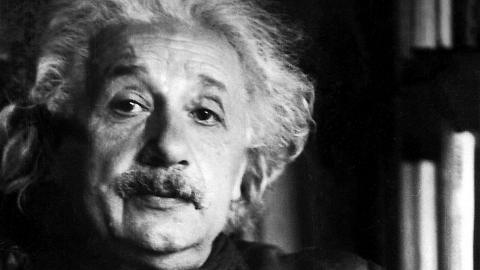
Albert Einstein was one of the world’s most brilliant thinkers, influencing scientific thought immeasurably. He was also not shy about sharing his wisdom about other topics , writing essays, articles, letters, giving interviews and speeches. His everyday-life opinions on social and intellectual issues that do not come from the world of physics give an insight into the spiritual and moral vision of the scientist , offering much to take to heart.
The collection of essays and ideas “The World As I See It” gathers Einstein’s thoughts from before 1935, when he was as the preface says “at the height of his scientific powers but not yet known as the sage of the atomic age”.
In the book, Einstein comes back to the question of the purpose of life, and what a meaningful life is, on several occasions. In one passage, he links it to a sense of religiosity.
“What is the meaning of human life, or, for that matter, of the life of any creature? To know an answer to this question means to be religious. You ask: Does it many any sense, then, to pose this question? I answer: The man who regards his own life and that of his fellow creatures as meaningless is not merely unhappy but hardly fit for life,” wrote Einstein.
Did Einstein himself hold religious beliefs ? Raised by secular Jewish parents, he had complex and evolving spiritual thoughts. He generally seemed to be open to the possibility of the scientific impulse and religious thoughts coexisting in people’s lives .
“Science without religion is lame, religion without science is blind,” said Einstein in his 1954 essay on science and religion.
Some (including the scientist himself) have called Einstein’s spiritual views pantheism , largely influenced by the philosophy of Baruch Spinoza . Pantheists see God as existing but abstract, equating all of reality with divinity. They also reject a specific personal God or a god that is somehow endowed with human attributes.
Himself a famous atheist, Richard Dawkins calls Einstein’s pantheism a “sexed-up atheism,” but other scholars point to the fact that Einstein did seem to believe in a supernatural intelligence that’s beyond the physical world. He referred to it in his writings as “a superior spirit,” “a superior mind” and a “spirit vastly superior to men”. Einstein was possibly a deist , although he was quite familiar with various religious teachings, including a strong knowledge of Jewish religious texts .
In another passage from 1934, Einstein talks about the value of a human being, reflecting a Buddhist-like approach:
“The true value of a human being is determined primarily by the measure and the sense in which he has attained liberation from the self”.
This theme of liberating the self to glimpse life’s true meaning is also echoed by Einstein later on, in a 1950 letter to console a grieving father Robert S. Marcus:
“A human being is a part of the whole, called by us “Universe,” a part limited in time and space. He experiences himself, his thoughts and feelings as something separate from the rest—a kind of optical delusion of his consciousness. The striving to free oneself from this delusion is the one issue of true religion. Not to nourish it but to try to overcome it is the way to reach the attainable measure of peace of mind.”
In case you are wondering whether Einstein saw value in material pursuits, here’s him talking about accumulating wealth in 1934, as part of the “The World As I See It”:
“I am absolutely convinced that no wealth in the world can help humanity forward, even in the hands of the most devoted worker in this cause. The example of great and pure characters is the only thing that can lead us to noble thoughts and deeds. Money only appeals to selfishness and irresistibly invites abuse. Can anyone imagine Moses, Jesus or Gandhi armed with the money-bags of Carnegie?”
In discussing the ultimate question of life’s real meaning , the famous physicist gives us plenty to think about when it comes to the human condition .
Can philosophy lead us to a good life ? Here, Columbia Professor Philip Kitcher explains how great minds—like Plato , Aristotle , Socrates , Confucius, Mencius, Immanuel Kant, Friedrich Nietzsche , Albert Camus , and Jean-Paul Sartre—can help us find meaning and wellbeing in human existence—even if there is no “ better place “.
Related reading: Sapiens: Can Humans Overcome Suffering and Find True Happiness?
Related reading: A Growing Number of Scholars Are Questioning the Historical Existence of Jesus Christ
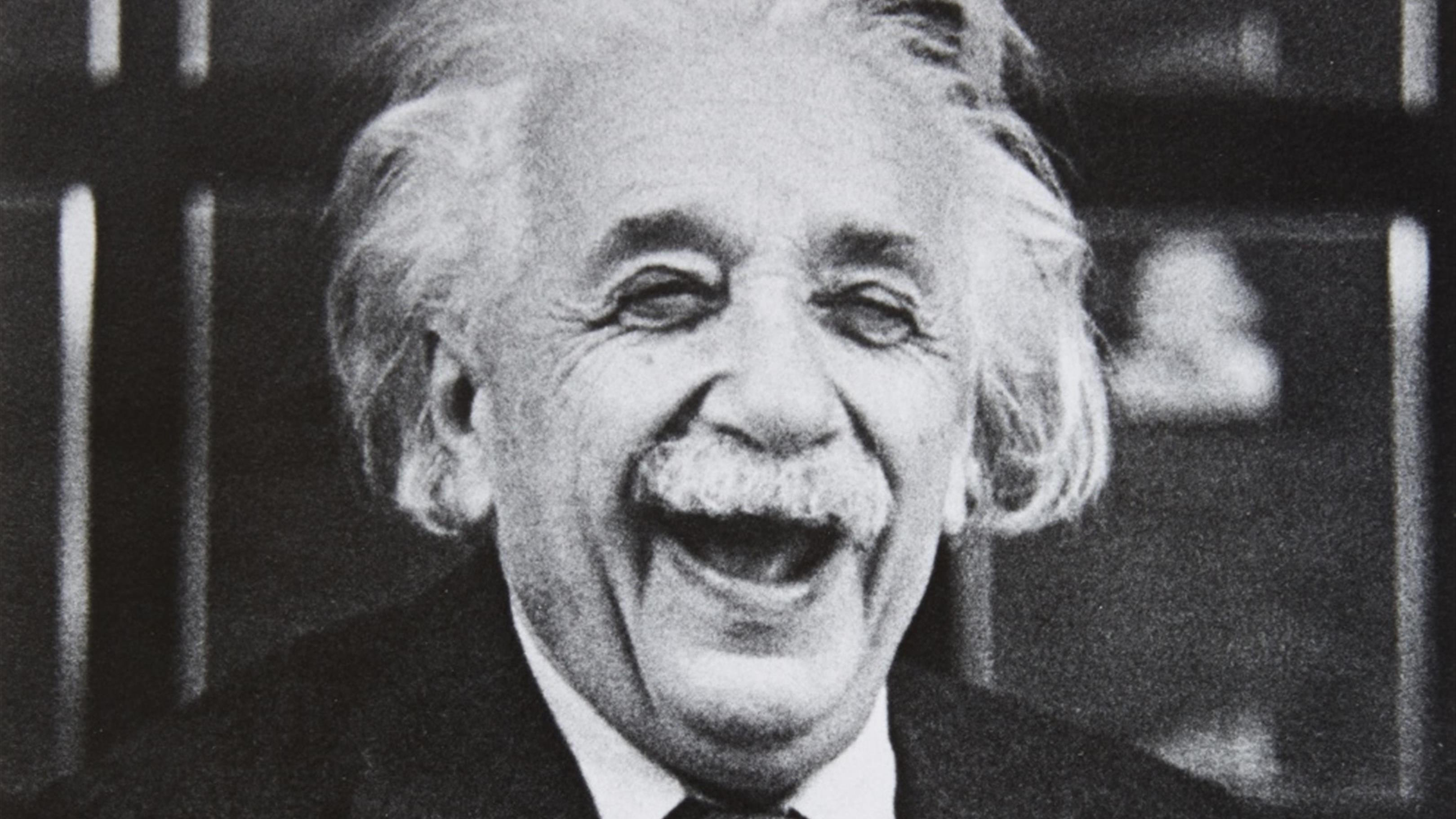
Essays About Life: Top 5 Examples Plus 7 Prompts
Life envelops various meanings; if you are writing essays about life, discover our comprehensive guide with examples and prompts to help you with your essay.
What is life? You can ask anyone; I assure you, no two people will have the same answer. How we define life relies on our beliefs and priorities. One can say that life is the capacity for growth or the time between birth and death. Others can share that life is the constant pursuit of purpose and fulfillment. Life is a broad topic that inspires scholars, poets, and many others. It stimulates discussions that encourage diverse perspectives and interpretations.
| IMAGE | PRODUCT | |
|---|---|---|
| Grammarly | ||
| ProWritingAid |
5 Essay Examples
1. essay on life by anonymous on toppr.com, 2. the theme of life, existence and consciousness by anonymous on gradesfixer.com, 3. compassion can save life by anonymous on papersowl.com, 4. a life of consumption vs. a life of self-realization by anonymous on ivypanda.com, 5. you only live once: a motto for life by anonymous on gradesfixer.com, 1. what is the true meaning of life, 2. my life purpose, 3. what makes life special, 4. how to appreciate life, 5. books about life, 6. how to live a healthy life, 7. my idea of a perfect life.
“…quality of Life carries huge importance. Above all, the ultimate purpose should be to live a meaningful life. A meaningful life is one which allows us to connect with our deeper self.”
The author defines life as something that differentiates man from inorganic matter. It’s an aspect that processes and examines a person’s actions that develop through growth. For some, life is a pain because of failures and struggles, but it’s temporary. For the writer, life’s challenges help us move forward, be strong, and live to the fullest. You can also check out these essays about utopia .
“… Kafka defines the dangers of depending on art for life. The hunger artist expresses his dissatisfaction with the world by using himself and not an external canvas to create his artwork, forcing a lack of separation between the artist and his art. Therefore, instead of the art depending on the audience, the artist depends on the audience, meaning when the audience’s appreciation for work dwindles, their appreciation for the artist diminishes as well, leading to the hunger artist’s death.”
The essay talks about “ A Hunger Artist ” by Franz Kafka, who describes his views on life through art. The author analyzes Kafka’s fictional main character and his anxieties and frustrations about life and the world. This perception shows how much he suffered as an artist and how unhappy he was. Through the essay, the writer effectively explains Kafka’s conclusion that artists’ survival should not depend on their art.
“Compassion is that feeling that we’ve all experienced at some point in our lives. When we know that there is someone that really cares for us. Compassion comes from that moment when we can see the world through another person’s eyes.”
The author is a nurse who believes that to be professional, they need to be compassionate and treat their patients with respect, empathy, and dignity. One can show compassion through small actions such as talking and listening to patients’ grievances. In conclusion, compassion can save a person’s life by accepting everyone regardless of race, gender, etc.
“… A life of self-realization is more preferable and beneficial in comparison with a life on consumption. At the same time, this statement may be objected as person’s consumption leads to his or her happiness.”
The author examines Jon Elster’s theory to find out what makes a person happy and what people should think and feel about their material belongings. The essay mentions a list of common activities that make us feel happy and satisfied, such as buying new things. The writer explains that Elster’s statement about the prevalence of self-realization in consumption will always trigger intense debate.
“Appreciate the moment you’ve been given and appreciate the people you’ve been given to spend it with, because no matter how beautiful or tragic a moment is, it always ends. So hold on a little tighter, smile a little bigger, cry a little harder, laugh a little louder, forgive a little quicker, and love a whole lot deeper because these are the moments you will remember when you’re old and wishing you could rewind time.”
This essay explains that some things and events only happen once in a person’s life. The author encourages teenagers to enjoy the little things in their life and do what they love as much as they can. When they turn into adults, they will no longer have the luxury to do whatever they want.
The author suggests doing something meaningful as a stress reliever, trusting people, refusing to give up on the things that make you happy, and dying with beautiful memories. For help with your essays, check out our round-up of the best essay checkers .
7 Prompts for Essays About Life

Life encompasses many values and depends on one’s perception. For most, life is about reaching achievements to make themselves feel alive. Use this prompt to compile different meanings of life and provide a background on why a person defines life as they do.
Take Joseph Campbell’s, “Life has no meaning. Each of us has meaning, and we bring it to life. It is a waste to be asking the question when you are the answer,” for example. This quote pertains to his belief that an individual is responsible for giving life meaning.
For this prompt, share with your readers your current purpose in life. It can be as simple as helping your siblings graduate or something grand, such as changing a national law to make a better world. You can ask others about their life purpose to include in your essay and give your opinion on why your answers are different or similar.
Life is a fascinating subject, as each person has a unique concept. How someone lives depends on many factors, such as opportunities, upbringing, and philosophies. All of these elements affect what we consider “special.”
Share what you think makes life special. For instance, talk about your relationships, such as your close-knit family or best friends. Write about the times when you thought life was worth living. You might also be interested in these essays about yourself .
Life in itself is a gift. However, most of us follow a routine of “wake up, work (or study), sleep, repeat.” Our constant need to survive makes us take things for granted. When we endlessly repeat a routine, life becomes mundane. For this prompt, offer tips on how to avoid a monotonous life, such as keeping a gratitude journal or traveling.
Many literary pieces use life as their subject. If you have a favorite book about life, recommend it to your readers by summarizing the content and sharing how the book influenced your outlook on life. You can suggest more than one book and explain why everyone should read them.
For example, Paulo Coelho’s “The Alchemist” reminds its readers to live in the moment and never fear failure.

To be healthy doesn’t only pertain to our physical condition. It also refers to our mental, spiritual, and emotional well-being. To live a happy and full life, individuals must strive to be healthy in all areas. For this prompt, list ways to achieve a healthy life. Section your essay and present activities to improve health, such as eating healthy foods, talking with friends, etc.
No one has a perfect life, but describe what it’ll be like if you do. Start with the material things, such as your house, clothes, etc. Then, move to how you connect with others. In your conclusion, answer whether you’re willing to exchange your current life for the “perfect life” you described and why. See our essay writing tips to learn more!
The Meaning of Life: Personal Essay Essay
- To find inspiration for your paper and overcome writer’s block
- As a source of information (ensure proper referencing)
- As a template for you assignment
When it comes to the meaning of life, there are two different ways we can look at it. Both of these have their advantages and disadvantages, and ultimately it is up to the individual to decide which sense of the term they use when discussing the meaning of life. In my opinion, life has meaning which comes from the choices, relationships, and experiences that an individual has, so I find personal meaning within myself.
The external meaning of life is something that is imposed upon us from an outside source. This could be anything from a religious belief system to a set of societal norms and expectations. For example, some people may believe that the meaning of life is to serve God, while others may think that the meaning of life is to be successful in their career. The advantage of this type of meaning is that it provides a clear goal and a sense of purpose, which can help people stay focused and motivated (Novosel, 2020). The disadvantage, however, is that it can be limiting and can make it difficult to explore and find meaning in other areas of life.
The internal meaning of life is something that we find within ourselves. I believe that life is a journey and the meaning of life comes from the choices we make and the relationships we form. Expressing creativity and helping others by making a positive impact on the world are just a few ways to find purpose in life (Novosel, 2020). Nevertheless, it can be challenging to discover the meaning of life, as it requires self-reflection and exploration. The reward of this effort is the sense of freedom it brings, allowing us to define our own sense of purpose.
In conclusion, life is a journey and the meaning of life is a combination of both the internal and external meaning. It is often said that there is no definite answer to the question of the meaning of life. Everyone has their own distinct point of view and it is ultimately the individual’s choice to select which interpretation they would like to embrace. It could be an external interpretation or an internal one; the essential thing is to uncover something that brings pleasure and satisfaction to your life.
Novosel, N. (2020). The meaning of life: A guide to finding your life’s purpose . Nathanael Garrett Novosel.
- SOAR Personality Diversity Analysis and Results
- Social Norms and Standards: Personal Essay
- Self-Reflection on Course Participation
- Self-Reflection in Nurses: 70-Year-Old Patient
- Black Lives Matter: Diversity Awareness and Self-Reflection
- The Power of Personal Mission Statements
- Adolescent Socialization in a Post-Pandemic World
- From Solitude to Socialization: A Journey of Friendship
- The Value of Life Learnt from Personal Experience
- Navigating the Ambiguity of Family
- Chicago (A-D)
- Chicago (N-B)
IvyPanda. (2024, May 24). The Meaning of Life: Personal Essay. https://ivypanda.com/essays/the-meaning-of-life-personal-essay/
"The Meaning of Life: Personal Essay." IvyPanda , 24 May 2024, ivypanda.com/essays/the-meaning-of-life-personal-essay/.
IvyPanda . (2024) 'The Meaning of Life: Personal Essay'. 24 May.
IvyPanda . 2024. "The Meaning of Life: Personal Essay." May 24, 2024. https://ivypanda.com/essays/the-meaning-of-life-personal-essay/.
1. IvyPanda . "The Meaning of Life: Personal Essay." May 24, 2024. https://ivypanda.com/essays/the-meaning-of-life-personal-essay/.
Bibliography
IvyPanda . "The Meaning of Life: Personal Essay." May 24, 2024. https://ivypanda.com/essays/the-meaning-of-life-personal-essay/.
Greater Good Science Center • Magazine • In Action • In Education
The Four Keys to a Meaningful Life
Could pursuing meaning be the path to true happiness?
We at Greater Good have written often about the differences between a happy life and a meaningful life and found that the two are closely related. When we aim for a life of meaningful pursuits, we are likely to feel more sustained happiness and life satisfaction—even if there is some discomfort, sadness, or stress along the way—than if we aim for a life of pleasure alone. In fact, seeking happiness directly may actually backfire , while pursuing meaning may increase our health and well-being .
Now a new book takes a stab at figuring out just what pursuing a meaningful life entails. In The Power of Meaning , journalist Emily Esfahani Smith draws from the texts of great writers and philosophers—Emerson, Aristotle, Buddha, and Victor Frankl, for example—as well as interviews with everyday people seeking to increase meaning in their lives, to try to distill what’s central in this pursuit. The book, though only loosely tied to research, is mostly an engaging read about how people find meaning in life through “four pillars” of meaning.

1. Belonging. When we are understood, recognized, and affirmed by friends, family members, partners, colleagues, and even strangers, we feel we belong to a community. Results from some studies —as well as end-of-life conversations —indicate that many people count their relationships as the most meaningful part of their lives, even when those relationships are difficult or strained.
2. Purpose. When we have long-term goals in life that reflect our values and serve the greater good, we tend to imbue our activities with more meaning. Researcher Adam Grant has found that professions focused on helping others—teachers, surgeons, clergy, and therapists—all tend to rate their jobs as more meaningful, and that people who imbue their work with purpose are more dedicated to their jobs . Having purpose has also been tied to many positive outcomes, including increased learning for students in school and better health .
3. Storytelling. When it comes to finding meaning, it helps to try to pull particularly relevant experiences in our lives into a coherent narrative that defines our identity. People who describe their lives as meaningful tend to have redemptive stories where they overcame something negative, and to emphasize growth, communion with others, and personal agency. Laura Kray and colleagues found that asking people to consider paths not taken in life and the consequences of those choices imbued experiences with more meaning .
4. Transcendence. Experiences that fill us with awe or wonder—ones in which “we feel we have risen above the everyday world to experience a higher reality,” according to Smith— can decrease our self-focus and lead us to engage in more generous, helpful behavior . It may seem counterintuitive in some ways; but the diminishment of our own self-importance can induce a sense of meaning, she says.
Smith’s book aims to be somewhat prescriptive, offering practices that could encourage meaning in your own life. For example, at work you may want to practice acknowledging coworkers, engaging in personal interactions, and offering support to others when they need it, using these “high-quality connections” to increase your sense of belonging. You may also want to redefine the tasks of your job to fit your motives, strengths, and passions— a strategy recommended by organizational scholar Jane Dutton and colleagues .
Or, if you feel stuck, you may want to spend time creating a life narrative —an understanding of what experiences shaped you into the person you are now—with a redemptive storyline, perhaps through expressive writing practice or through working with a therapist. Or, you may want to find ways to experience more awe in your life, spending time in nature, staring at the stars, experiencing profound works of art, or pondering heroic figures.
Though her book is more focused on stories and philosophy than research, Smith does at least offer new ideas in an area that was once primarily the purview of spiritual traditions. She argues that pursuing meaning can be healing, not only for those of us with mild existential malaise, but for those who’ve suffered trauma or are facing their own mortality.
Her book is a call to recognize our place in the world—perhaps most importantly by nurturing our relationships and serving others—so that we bring more meaning to our lives.
“Each of us has a circle of people—in our families, in our communities, and at work—whose lives we can improve,” she writes. “That’s a legacy everyone can leave behind.”
About the Author


Jill Suttie
Jill Suttie, Psy.D. , is Greater Good ’s former book review editor and now serves as a staff writer and contributing editor for the magazine. She received her doctorate of psychology from the University of San Francisco in 1998 and was a psychologist in private practice before coming to Greater Good .
You May Also Enjoy

Eight Ways to Find More Meaning at Work
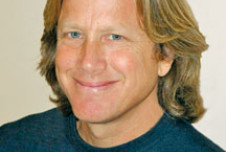
What Is a Meaningful Life?

Is a Happy Life Different from a Meaningful One?

Can Helping Others Help You Find Meaning in Life?
Six tips for making the leap to meaningful work.

Seven Paths to a Meaningful Life

Seeking Meaning in Love and Loss
Personal perspective: finding resilience in the ebbs and flows of life..
Posted September 4, 2024 | Reviewed by Davia Sills
- What Is Resilience?
- Take our Resilience Test
- Find a therapist near me
- When we lose people we care about, dealing with our grief and emotional responses can be difficult.
- Grief can begin our journey toward healing.
- Emotional agility can help us notice our inner experience and offers flexibility to choose our responses.
There’s a beautiful red maple tree in our yard. It stands vibrantly and serenely about 30 feet high—now. But it wasn’t always that way.
My mom and dad gifted the maple to us as a small young tree about 25 years ago. Nobody would have predicted that this modest, crimson sapling would survive the challenges it has faced in its many years, for it was planted in its burlap bag so that its roots grew tightly wrapped around its trunk. Yet it has survived.
Not only has it survived, but it has flourished, bringing resilience , beauty, shade, wisdom , and love into our lives. Like my mom, who survived numerous challenges in her life, the tree has survived the many odds stacked against it.

While the remarkable tree still stands, after her long life, my mom has passed away. Yet even in her final days, like the maple tree, my mom shared profound lessons in resilience, beauty, wisdom, and love. Mom was still getting up and walking until just a few weeks before she died, when, for the first time, she fell down and just couldn’t get back up.
Until those moments, I believe my mom lived the definition of resilience, the ability to respond well to life’s adversities (American Psychological Association, 2014). Throughout her long and meaningful life, she found a way to get back up each time life pushed her down.
It’s been very hard to say goodbye. Grief and emotional responses to loss are not easy. It feels like a connection has been broken and a barrier of protection has fallen.
Each time I look at that red maple tree, I think of my mom. The stately tree with its roots wrapped around its trunk threatening its very existence reminds me that nothing lives forever. That life is so confoundingly impermanent.
These past few years, as my mom’s well-being has declined, have offered frequent reminders of life’s impermanence and the resilience that we can bring to the vicissitudes of our lives—sorrows and joys, happiness and tears, tragedies and transcendent gifts. And reminders that in most situations, we have choices about our attitude toward whatever life throws at us (Frankl, 1959).
Although I’m trying to find meaning in the experience of love and loss, like many of us, I wish that life were different and that I could have things the way I want them. But alas, that is not how life happens. Yet I am reminded that even in the face of impermanence and loss, we do have choices about how we respond. Grieving is a normal response to the loss of someone or something important to us (Kessler, 2019). On the importance of grieving, David Kessler and Elizabeth Kubler-Ross write, “Grief is an emotional, spiritual , and psychological journey to healing” (Kessler & Kubler-Ross, 2005).
At times, grief can feel quite prominent and sad. At other times, it can sneak up on us by surprise. We may notice that our responses can shift quickly and frequently. These observations seem to require emotional agility, paying attention to our inner experience, and perceiving greater flexibility to choose a response (David, 2016).
Amidst the ebb and flow of grief, many spiritual traditions teach the core concept of love: to regard all other humans with lovingkindness and compassion. Perhaps the greatest continuity is love—love and self-compassion for ourselves and our own suffering, love for those in our personal spheres and communities, and the possibility of extending lovingkindness to those throughout this beautiful and broken world.
Disclaimer: This article is for informational purposes only. No content is a substitute for consulting with a qualified mental health or healthcare professional.
© 2024 Ilene Berns-Zare, LLC, All Rights Reserved
American Psychological Association (2014). The road to resilience . Washington DC. https://www.apa.org/helpcenter/road-resilience
David, S. (2016). Emotional agility: Get unstuck to embrace challenges and thrive in work and life. New York, NY: Avery.
Frankl, V. (1959). Man’s search for meaning . New York, NY: Washington Square Press.
Kessler, D. (2019). Finding meaning: The sixth stage of grief . New York, NY: Scribner.
Kessler, D. & Kubler-Ross, E. (2005). On grief and grieving: Finding the meaning of grief through the five stages of loss . New York, NY: Scribner.

Ilene Berns-Zare, PsyD, is a life and leadership coach. She writes about navigating personal and professional life with resilience, meaning, mindfulness, and well-being.
- Find a Therapist
- Find a Treatment Center
- Find a Psychiatrist
- Find a Support Group
- Find Online Therapy
- United States
- Brooklyn, NY
- Chicago, IL
- Houston, TX
- Los Angeles, CA
- New York, NY
- Portland, OR
- San Diego, CA
- San Francisco, CA
- Seattle, WA
- Washington, DC
- Asperger's
- Bipolar Disorder
- Chronic Pain
- Eating Disorders
- Passive Aggression
- Personality
- Goal Setting
- Positive Psychology
- Stopping Smoking
- Low Sexual Desire
- Relationships
- Child Development
- Self Tests NEW
- Therapy Center
- Diagnosis Dictionary
- Types of Therapy

It’s increasingly common for someone to be diagnosed with a condition such as ADHD or autism as an adult. A diagnosis often brings relief, but it can also come with as many questions as answers.
- Emotional Intelligence
- Gaslighting
- Affective Forecasting
- Neuroscience
Trending Topics
- Hersh Goldberg-Polin
Get JTA in your inbox
By submitting the above I agree to the privacy policy and terms of use of JTA.org
At the Jerusalem synagogue where Hersh Goldberg-Polin danced in life, grief and anger reign after his death

JERUSALEM — Three hundred and thirty-two days after Hersh Goldberg-Polin danced in the courtyard next to his Jerusalem synagogue on the holiday of Simchat Torah, more than a thousand people gathered there in grief and prayer to mourn his murder by Hamas terrorists in Gaza.
During the Sunday night vigil, the courtyard railings were lined with oversized yellow ribbons to symbolize advocacy for the hostages, Hapoel Jerusalem soccer flags — the 23-year-old’s favorite team — and posters that read, “We love you, stay strong, survive,” a mantra coined by his mother, Rachel Goldberg-Polin.
Just hours earlier, one of the posters had been hanging over the balcony of the home of Shira Ben-Sasson, a leader of Hakhel, the Goldberg-Polins’ egalitarian congregation in the Baka neighborhood of Jerusalem.
“We were sure we would take it down when he came home,” Ben-Sasson said.
The community wanted to unite while respecting the Goldberg-Polins’ desire for privacy, she said, prompting them to organize the prayer gathering.
“But it’s like a Band-Aid or giving first aid, it’s what you do in an emergency. I don’t know how we go on after this,” she said.

A covered courtyard at the Hakhel congregation was filled with mourners the day after Hersh Goldberg-Polin, whose family are prominent members, was found to have been killed in Gaza. Hundreds of other people crowded outside the gates, Sept. 1, 2024. (Deborah Danan)
She added that the community, which has a large contingent of English-speaking immigrants, was not prepared for the High Holidays, which begin in about a month. She said, “Seeing his empty seat is hard.”
For Ben-Sasson, who wore a T-shirt bearing the Talmudic dictum “There is no greater mitzvah than the redeeming of captives,” the tragedy is especially painful because, she said, it could have been avoided with a ceasefire agreement that freed hostages.
“Hersh was alive 48 hours ago. We think a deal could have saved him. There is no military solution to this,” she said.
That feeling of bereavement, often mixed with betrayal, pervaded gatherings across Israel on Sunday, as the country struggled with the news that six hostages who may have been freed in an agreement were now dead as negotiations continue to stall. Speakers at protests in Tel Aviv blamed Israeli Prime Minister Benjamin Netanyahu, who himself apologized for not getting the hostages out alive but blamed Hamas for obstructing a deal. The country’s labor union, the Histadrut, has called a national strike on Monday to demand a deal.
A rare early September rain lashed parts of Israel on Sunday, leading to a widespread interpretation: God, too, was weeping.
Some at the Jerusalem gathering, including the relative of another former hostage, said Netanyahu had chosen defeating Hamas over freeing the captives.
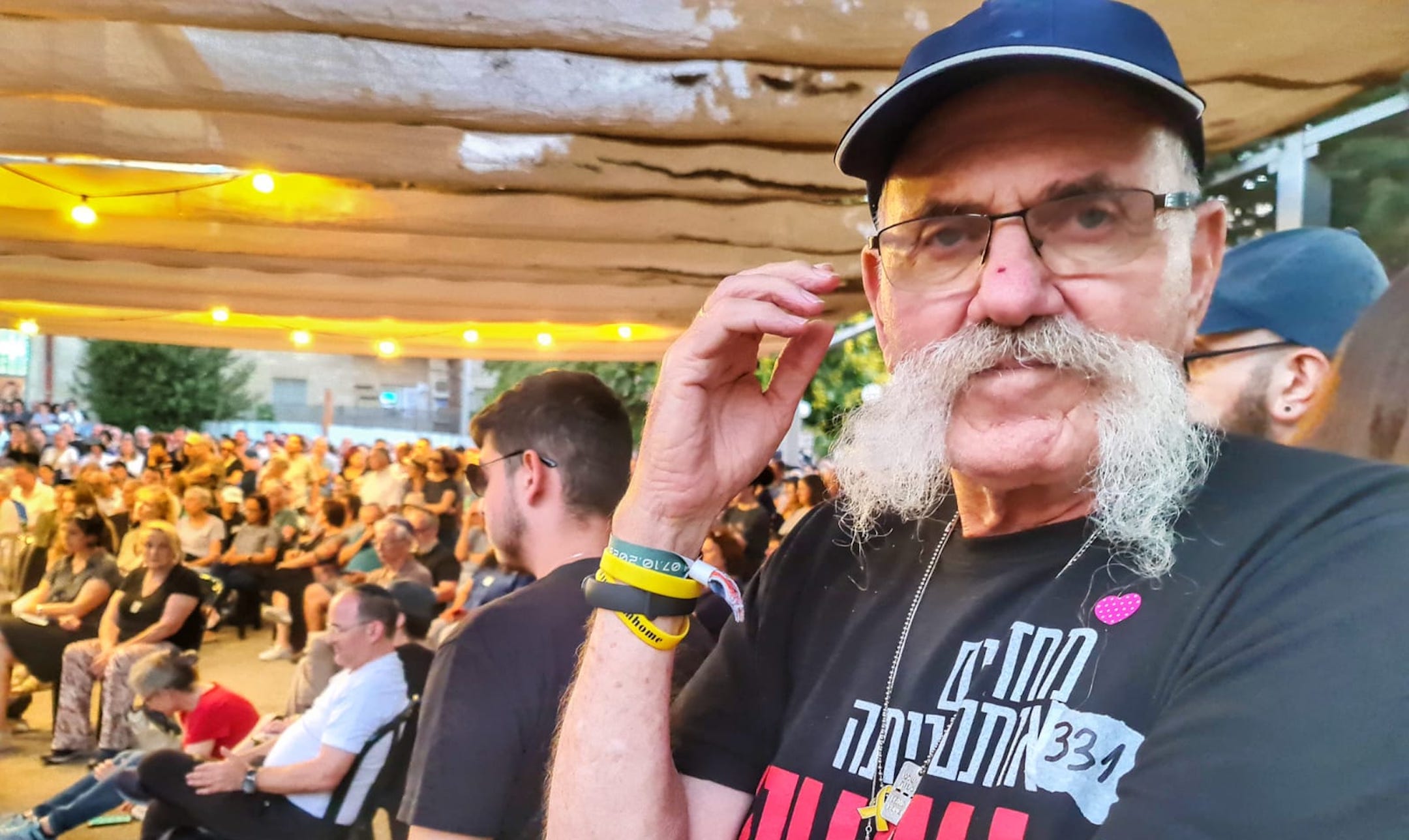
Josef Avi Yair Engel’s grandson Ofir was released from Hamas captivity in November. He paid tribute to Hersh Goldberg-Polin, murdered in captivity, in Jerusalem, Sept. 1, 2024. (Deborah Danan)
Josef Avi Yair Engel, whose grandson Ofir, 18, was released from Hamas captivity in November during that month’s ceasefire deal, expressed shock over Hersh’s murder but said he was not surprised, given the wartime policies of Netanyahu’s government.
“We knew months ago this was going to happen. Bibi’s formula, to dismantle Hamas and return the hostages, wasn’t logical. It’s an either/or situation,” Engel said, referring to Netanyahu by his nickname. “He’s tearing the country apart. I’m afraid that in the coming months there won’t be a state at all.”
Engel said he felt a close bond with Hersh’s father Jon Polin, not only because of their joint activism in the hostage families’ tent outside the Prime Minister’s Residence, but also because of their shared identity as Jerusalemites.
“There aren’t many of us in the hostage circle,” he said. “We’re like family.”
Sarah Mann, who did not know the family personally, said the weekend’s tragedy reminded her of Oct. 7.
“This day has sparks of the seventh, which created numbness and an inability to talk. Just complete shock,” she said.

Mourners left notes at a gathering at Hersh Goldberg-Polin’s family synagogue in Jerusalem. Many of the messages used the Hebrew word for “sorry.” (Deborah Danan)
Part of the reason for that, Mann said, was Rachel, who she described as a “force of faith.” Goldberg-Polin’s mother emerged as the most prominent advocate for the hostages globally and became a symbol in her own right as she crisscrossed the world calling for her son’s freedom.
“Millions of people around the world held onto her. Once that was cut, people’s ability to hold onto faith was knocked out today. But even though this has shattered us, we need to keep holding onto God,” Mann said.
For Susi Döring Preston, the day called to mind was not Oct. 7 but Yom Kippur, and its communal solemnity.
She said she usually steers clear of similar war-related events because they are too overwhelming for her.
“Before I avoided stuff like this because I guess I still had hope. But now is the time to just give in to needing to be around people because you can’t hold your own self up any more,” she said, tears rolling down her face. “You need to feel the humanity and hang onto that.”
Like so many others, Döring Preston paid tribute to the Goldberg-Polins’ tireless activism. “They needed everyone else’s strength but we drew so much strength from them and their efforts, “she said. “You felt it could change the outcome. But war is more evil than good. I think that’s the crushing thing. You can do everything right, but the outcome is still devastating.”
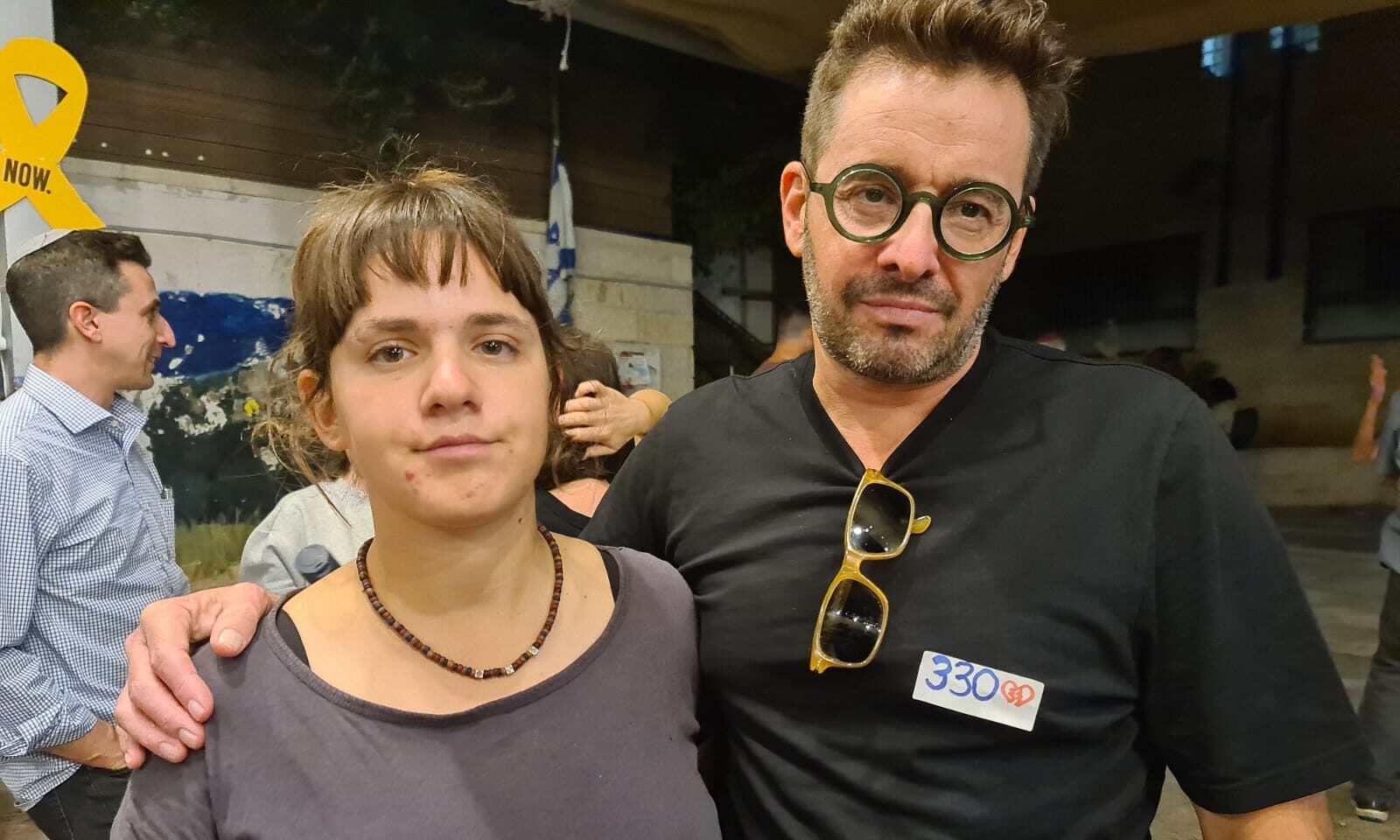
Guy Gordon, with his daughter Maya, added a broken heart to the piece of tape he has worn daily to mark the number of days since the hostage crisis began, Sept. 1, 2024. (Deborah Danan)
Guy Gordon, a member of Hakhel who moved to Israel from Dublin, Ireland, in the mid-1990s, said the efforts towards ensuring Hersh’s safe return have been an anchor for the community during the war. The community knew him as the family described him in its announcement of his funeral on Tuesday, as “a child of light, love and peace” who enjoyed exploring the world and coming home to his family, including his parents and younger sisters, Leebie and Orly.
“It gave us something to hope for, and pray for and to demonstrate for,” he said. “We had no choice but to be unreasonably optimistic. Tragically it transpired that he survived until the very end.”
Gordon, like many others in the crowd, wore a piece of duct tape marked with the number of days since Oct. 7 — a gesture initiated by Goldberg-Polin’s mother. Unlike on previous days, though, his tape also featured a broken red heart beside the number.
Nadia Levene, a family friend, also reflected on the improbability of Hersh’s survival.
“He did exactly what his parents begged him to do. He was strong. He did survive. And look what happened,” Levene said.
She hailed Rachel Goldberg-Polin’s “unwavering strength and belief in God,” adding, “There were times I lost faith. I suppose I was angry with God. But she just kept inspiring us all to pray, pray, pray.”
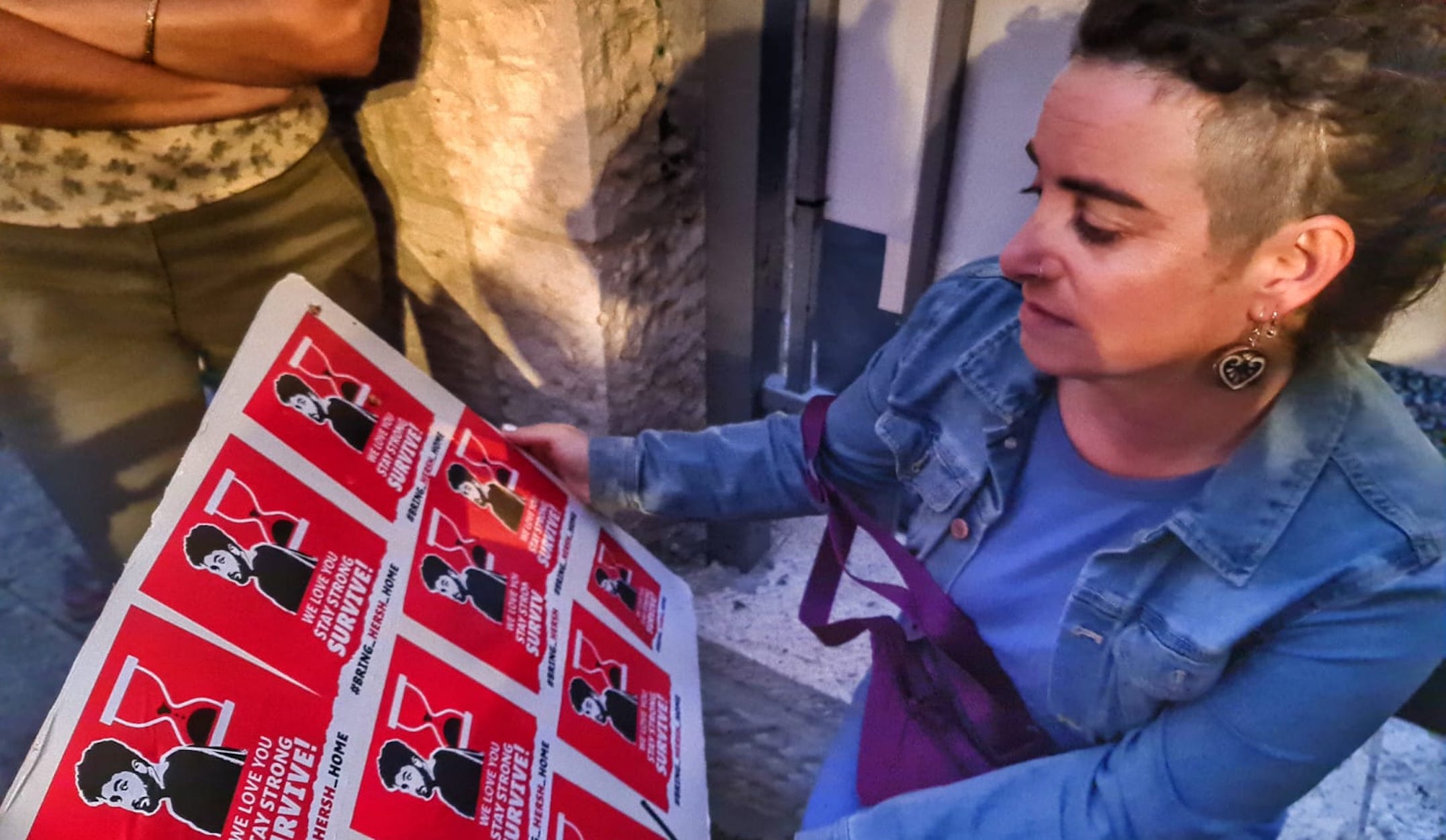
Leah Silver of Jerusalem examined stickers showing Rachel Goldberg-Polin’s mantra for her son Hersh, who was murdered in captivity in Gaza, at a gathering after Hersh’s death, Sept. 1, 2024. (Deborah Danan)
Jerusalem resident Leah Silver rejected politicizing the hostages’ deaths.
“Everything turns political so quickly. I came here because I felt that before all the protests, we need to just mourn for a moment and to pray. And show respect for each other,” she said. “We’ve become confused about who the enemy is. It’s very sad.”
But not everyone at the gathering joined in to sing Israel’s national anthem at the closing of the prayer gathering.
“I’m sorry, I can’t sing ‘Hatikvah,'” Reza Green, a Baka resident who did not know the Goldberg-Polins personally, said. “I’m too angry. We shouldn’t be here.”
Share this:
Recommended from jta.

Meta panel rules that ‘from the river to the sea’ is not inherently antisemitic

‘I’m gutted,’ Doug Emhoff says about murdered hostages at Washington synagogue vigil

Engagement in campus Jewish life spiked after Oct. 7 but has since dropped down somewhat, Tufts study finds

US Justice Department files criminal charges against Hamas, spurred by Hersh Goldberg-Polin’s murder

As Israel endured a difficult weekend at home, its athletes won several Paralympic medals, bringing Paris total to 7

Hapoel Jerusalem, Hersh Goldberg-Polin’s favorite soccer club, mourns the death of ‘our friend in the stands’
6 editor-approved Amazon bestsellers for fall — from $10
- Share this —

- Watch Full Episodes
- Read With Jenna
- Inspirational
- Relationships
- TODAY Table
- Newsletters
- Start TODAY
- Shop TODAY Awards
- Citi Concert Series
- Listen All Day
Follow today
More Brands
- On The Show
- TODAY Plaza
Supreme Court rejects bid to restrict access to abortion pill
In a blow for anti-abortion advocates, the Supreme Court on Thursday rejected a challenge to the abortion pill mifepristone , meaning the commonly used drug can remain widely available.
The court found unanimously that the group of anti-abortion doctors who questioned the Food and Drug Administration’s decisions making it easier to access the pill did not have legal standing to sue.
President Joe Biden said in a statement that while the ruling means the pill can remain easily accessible, “the fight for reproductive freedom continues” in the aftermath of the Supreme Court’s ruling two years ago that overturned abortion rights landmark Roe v. Wade.
“It does not change the fact that the right for a woman to get the treatment she needs is imperiled if not impossible in many states,” he added.
Justice Brett Kavanaugh, writing for the court, wrote that while plaintiffs have “sincere legal, moral, ideological, and policy objections to elective abortion and to FDA’s relaxed regulation of mifepristone,” that does not mean they have a federal case.
The plaintiffs failed to show they had suffered any injury, meaning that “the federal courts are the wrong forum for addressing the plaintiffs’ concerns about FDA’s actions,” he added.
“The plaintiffs may present their concerns and objections to the president and FDA in the regulatory process or to Congress and the president in the legislative process,” Kavanaugh wrote. “And they may also express their views about abortion and mifepristone to fellow citizens, including in the political and electoral processes.”
The legal challenge was brought by doctors and other medical professionals represented by the conservative Christian legal group Alliance Defending Freedom.
“We are disappointed that the Supreme Court did not reach the merits of the FDA’s lawless removal of commonsense safety standards for abortion drugs,” said Erin Hawley, one of the group’s lawyers. She told reporters she is hopeful the underlying lawsuit can continue because three states — Idaho, Missouri and Kansas — have brought their own claims and have different arguments for standing.
By throwing out the case on such grounds, the court avoided reaching a decision on the legal merits of whether the FDA acted lawfully in lifting various restrictions, including one making the drug obtainable via mail, meaning the same issues could yet return to the court in another case.
Another regulatory decision left in place means women can still obtain the pill within 10 weeks of gestation instead of seven.
Likewise a decision to allow health care providers other than physicians to dispense the pill will remain in effect.
The court’s decision to roll back abortion rights two years ago led to a wave of new abortion restrictions in conservative states.
Then, the court suggested it was removing itself from the political debate over abortion, but with litigation continuing to rage over abortion access, the justices are continuing to play a pivotal role.
Abortion rights supporters welcomed the ruling, with Nancy Northup, president of the Center for Reproductive Rights, saying she was relieved at the outcome but angered about the case lingering in the court system so long.
“Thank goodness the Supreme Court rejected this unwarranted attempt to curtail access to medication abortion, but the fact remains that this meritless case should never have gotten this far,” she said in a statement.
Danco Laboratories, manufacturer of Mifeprex, the brand version of mifepristone, praised the ruling too, saying it was good for the drug approval process writ large.
In rejecting the challenge, the court “maintained the stability of the FDA drug approval process, which is based on the agency’s expertise and on which patients, health care providers and the U.S. pharmaceutical industry rely,” company spokeswoman Abigail Long said.
Anti-abortion groups expressed disappointment, saying that the ruling highlighted the importance of this year’s election in which Democrat Biden, who has pledged to defend abortion rights, faces off against Republican Donald Trump, who has the strong backing of conservatives who oppose abortion.
“Joe Biden and the Democrats are hell-bent on forcing abortion on demand any time for any reason, including DIY mail-order abortions, on every state in the country,” Marjorie Dannenfeiser, president of SBA Pro-Life America, said.
If Trump were to win the election, his appointees to the FDA would be a position to impose new restrictions on mifepristone. Biden’s campaign manager, Julie Chavez-Rodriguez, alluded to the possibility in a call with reporters after the ruling. Calling the case “one tactic in a broader, relentless strategy” by anti-abortion activists, Chavez-Rodriguez said if Trump is elected, his advisers and allies would try to ban abortion nationwide “without the help of Congress or the court,” and also restrict access to contraception — a threat, she said, to blue as well as red states.
The mifepristone dispute is not the only abortion case currently before the court. It is also due to decide whether Idaho’s strict abortion ban prevents doctors in emergency rooms from performing abortions when a pregnant woman is facing dangerous complications.
Mifepristone is used as part of a two-drug FDA-approved regimen that is now the most common form of abortion in the United States.
Abortion is effectively banned altogether in 14 states, according to the Guttmacher Institute, a research group that backs abortion rights.
The FDA had the backing of the pharmaceutical industry, which has warned that any second-guessing of the approval process by untrained federal judges could cause chaos and deter innovation.
Last year, Texas-based U.S. District Judge Matthew Kacsmaryk issued a sweeping ruling that completely invalidated the FDA’s approval of the pill, leading to panic among abortion-rights activists that it would be banned nationwide.
The Supreme Court last April put that ruling on hold, meaning the pill remained widely available while litigation continued.
The New Orleans-based 5th U.S. Circuit Court of Appeals in August then narrowed Kacsmaryk’s decision but left in place his conclusion that the FDA’s move to lift restrictions starting in 2016 was unlawful.
Both sides appealed to the Supreme Court. The court in December took up the Biden administration’s appeal in defense of the later FDA decisions, but it opted against hearing the challenge to the original approval of mifepristone in 2000.
The Supreme Court focused solely on the later FDA action, including the initial 2021 decision that made the drug available by mail, which was finalized last year.
This article first appeared on NBCNews.com .
Lawrence Hurley covers the Supreme Court for NBC News Digital.

EXCLUSIVE: Girl, 5, receives double-lung transplant after rare condition turned her skin blue

What is the healthiest toothpaste? The No. 1 pick, according to dentists
Skin & beauty.

Ciara's weight loss journey: Her approach to postpartum weight loss
Diet & fitness.
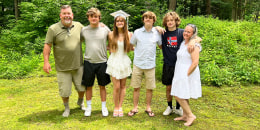
Dad, 54, battling ‘terrifying’ symptoms after contracting 3 deadly mosquito viruses
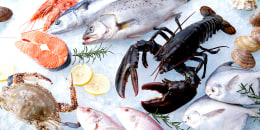
What is the healthiest seafood to eat? Experts share top picks

Elle Macpherson reveals breast cancer diagnosis, why she rejected traditional treatment
Breast cancer.

Do you know someone who’s been affected by breast cancer?

Is Greek yogurt or cottage cheese healthier? There’s 1 major nutrition difference, dietitians say

Jazz Jennings is feeling 'more motivated’ after losing nearly 100 pounds

Demi Moore, 61, reveals ‘one of the biggest misconceptions’ about her as she stuns in new cover shoot
New middle age.

IMAGES
VIDEO
COMMENTS
This essay focuses on the meaning of life as a whole, whereas the other addresses meaning in individual human lives. At the height of his literary fame, the novelist Leo Tolstoy was gripped by suicidal despair. [1] He felt that life is meaningless because, in the long run, we'll all be dead and forgotten. Tolstoy later rejected this pessimism ...
3. Naturalism. Recall that naturalism is the view that a physical life is central to life's meaning, that even if there is no spiritual realm, a substantially meaningful life is possible. Like supernaturalism, contemporary naturalism admits of two distinguishable variants, moderate and extreme (Metz 2019).
The meaning of life may never be definitively known. The meaning of life may be different for each individual and/or each species. The truth of the meaning of life is likely in the eye of the beholder. There were three choices given at the beginning of this essay, and for me, the answer is all of the above. Jason Hucsek, San Antonio, TX
So, it is really recognition that is the meaning of life — but that of course does not sound as dramatic and poetic as love being the meaning of life. But love, to be experienced 'to the ...
Author: Matthew Pianalto Category: Ethics, Phenomenology and Existentialism, Philosophy of Religion Word Count: 997. Editors' note: this essay and its companion essay, The Meaning of Life: What's the Point? both explore the concept of meaning in relation to human life. This essay focuses on meaning in individual human lives, whereas the other addresses the meaning of life as a whole.
The Meaning of "Meaning". One part of the field of life's meaning consists of the systematic attempt to clarify what people mean when they ask in virtue of what life has meaning. This section addresses different accounts of the sense of talk of "life's meaning" (and of "significance," "importance," and other synonyms).
Life is neither fixed nor absolute, it is ambiguous; life is the possibilities entailed by existence. Life is the consciousness of humanity; it is perception of the world and the universe. So life is sadness; life is death. Life is suffering and destruction. But life is also happiness; life is living.
The meaning of life pertains to the inherent significance or philosophical meaning of living (or existence in general). ... Arthur Schopenhauer was the first to explicitly ask the question, [1] in an essay entitled "Character". Since a man does not alter, ...
The Meaning of Life: A Very Short Introduction. Oxford: Oxford University Press, 2007. A light and lively essay on a variety of facets of the question of life's meaning, often addressing linguistic and literary themes. Rejects subjective or "postmodern" approaches to meaning in favor of a need for harmonious or loving relationships.
Abstract. This volume presents thirty-two essays on a wide array of topics in modern philosophical meaning in life research. The essays are organized into six parts. Part I, Understanding Meaning in Life, focuses on various ways of conceptualizing meaning in life. Among other issues, it discusses whether meaning in life should be understood ...
Similarly, for any definition of life, one can either show living cases that are left out of the definition or non-living cases that are included by it. Life is organized, but so are geological formations. Life processes energy, but so does fire. Life evolves using complex biochemistry, but so do prions.
The Meaning of Life: Philosophical Approaches Essay. The meaning of life is one of the questions that have attracted the attention of many philosophers as well as writers. Two different views on this issue are expressed by Richard Taylor and Susan Wolf. Get a custom essay on The Meaning of Life: Philosophical Approaches.
The Meanings of "Meaning". Meaning-talk is common in everyday discourse. Most ordinary uses of "meaning" tend to cluster around three basic ideas: (1) sense-making (which can include the ideas of intelligibility, clarification, or coherence), (2) purpose, and (3) significance (which can include the idea of value).
All of these set the table for a veritable feast of philosophical writing on the meaning of life that began in the 1950s with Kurt Baier's essay "The Meaning of Life," followed in 1970 by Richard Taylor's influential essay on the same topic, followed shortly by Thomas Nagel's important 1971 essay on "The Absurd."
This theme of liberating the self to glimpse life's true meaning is also echoed by Einstein later on, in a 1950 letter to console a grieving father Robert S. Marcus: "A human being is a part ...
For some, the meaning of life is intricately linked to religious beliefs and the idea of a higher power or divine purpose. In this view, life is regarded as a sacred gift meant to be lived in accordance with the will of a higher being. On the other hand, some believe the meaning of life is more secular, focusing on personal fulfillment ...
7 Prompts for Essays About Life. 1. What Is The True Meaning Of Life. Use this prompt to compile different meanings of life and provide a background on why a person defines life as they do. Life encompasses many values and depends on one's perception.
500+ Words Essay on Life. First of all, Life refers to an aspect of existence. This aspect processes acts, evaluates, and evolves through growth. ... Pursuing a hobby is a perfect way to bring meaning to life. Without a passion or interest, an individual's life would probably be dull. Following a hobby certainly brings new energy to life. It ...
The external meaning of life is something that is imposed upon us from an outside source. This could be anything from a religious belief system to a set of societal norms and expectations. For example, some people may believe that the meaning of life is to serve God, while others may think that the meaning of life is to be successful in their ...
3. Storytelling. When it comes to finding meaning, it helps to try to pull particularly relevant experiences in our lives into a coherent narrative that defines our identity. People who describe their lives as meaningful tend to have redemptive stories where they overcame something negative, and to emphasize growth, communion with others, and ...
The Myth of Sisyphus by Albert Camus is a philosophical essay written in 1942 that addresses the question of whether life is worth living through. From the perspective of the author, people share a similar path to the Greek hero Sisyphus, moving a boulder up... The Myth of Sisyphus Albert Camus Meaning of Life.
According to existentialism, life has no inherent meaning or purpose, and individuals must grapple with the anxiety and despair that arise from this realization. However, existentialists also argue that this lack of inherent meaning grants individuals the freedom to define their own purpose and create meaning through their choices and actions.
Accordingly, the meaning of life would be the movement to this universal happiness, the happiness of the creation as a whole. This is not an absurd idea and finds analogues in religious and secular thought. For example, in Christian philosophy as well as Islamic philosophy, we find the idea of the resurrection of the world and the justice for all.
She writes about navigating personal and professional life with resilience, meaning, mindfulness, and well-being. Online: Executive/Leadership Coaching Website, Facebook, LinkedIn, Twitter.
JERUSALEM — Three hundred and thirty-two days after Hersh Goldberg-Polin danced in the courtyard next to his Jerusalem synagogue on the holiday of Simchat Torah, more than a thousand people ...
Economy-as-communication: Finfluencers as mediators of economic meaning. The boundaries between economic processes and communicative practices are increasingly blurred. In Communication and economic life, Liz Moor (Citation 2021) argues that economic realities are not only represented through communication but are actively constituted by it. In ...
Justice Brett Kavanaugh, writing for the court, wrote that while plaintiffs have "sincere legal, moral, ideological, and policy objections to elective abortion and to FDA's relaxed regulation ...